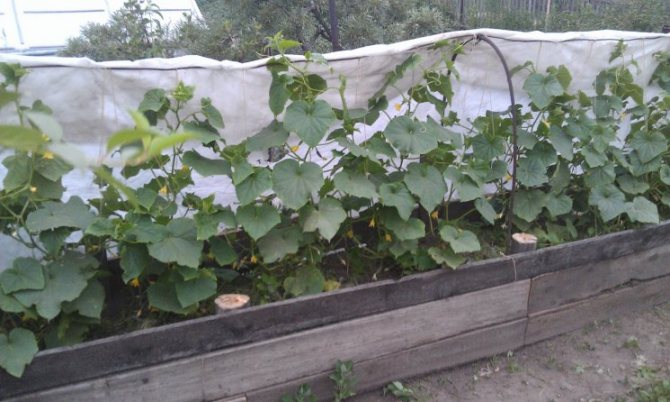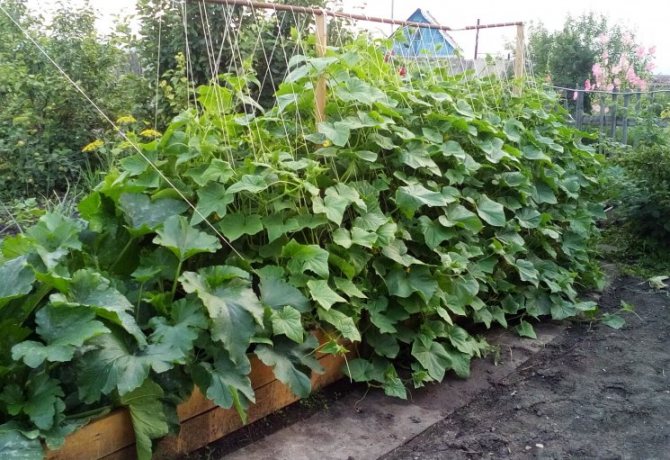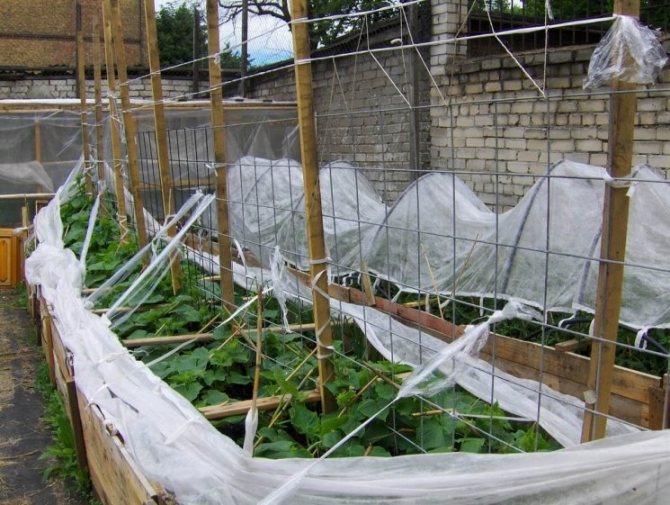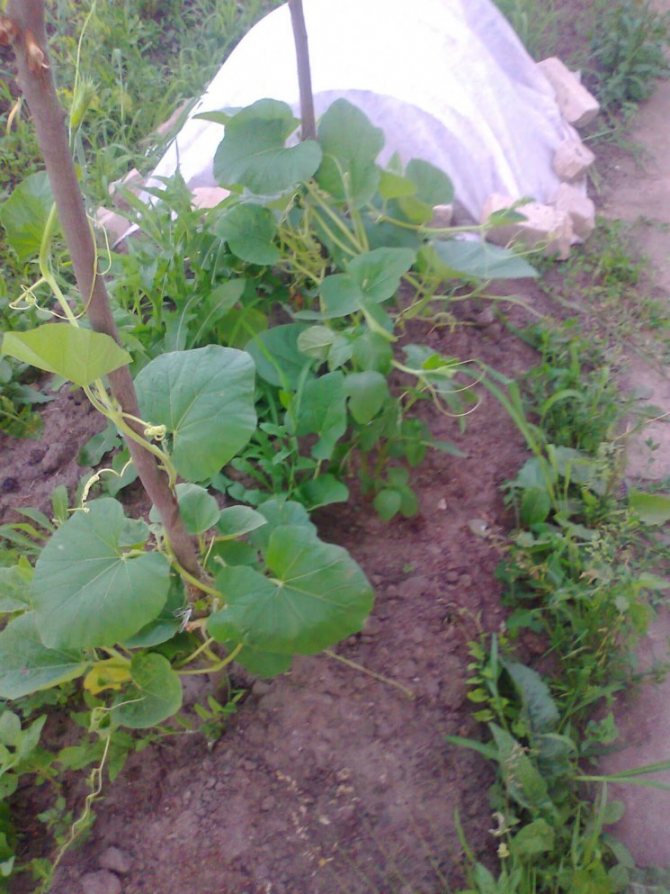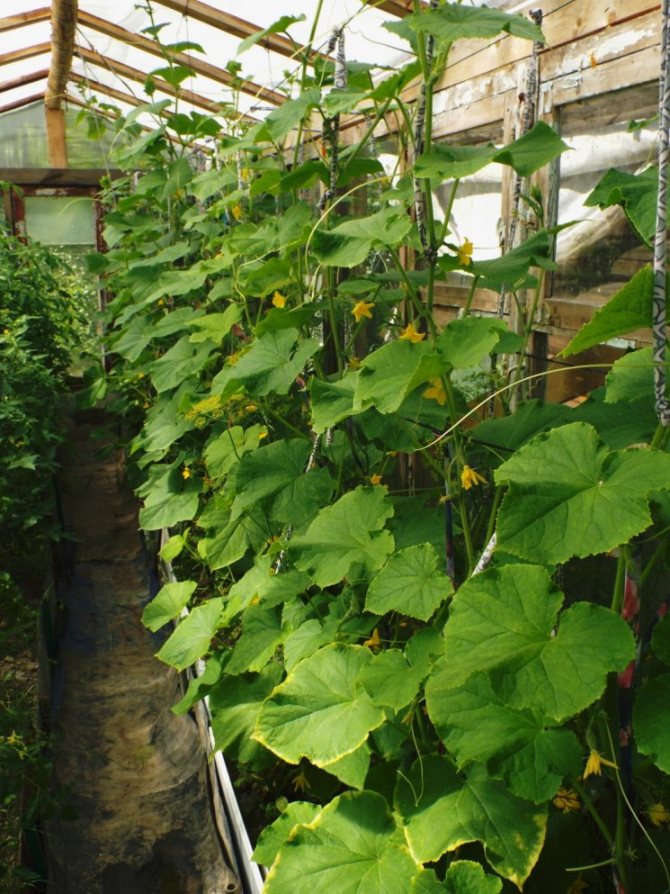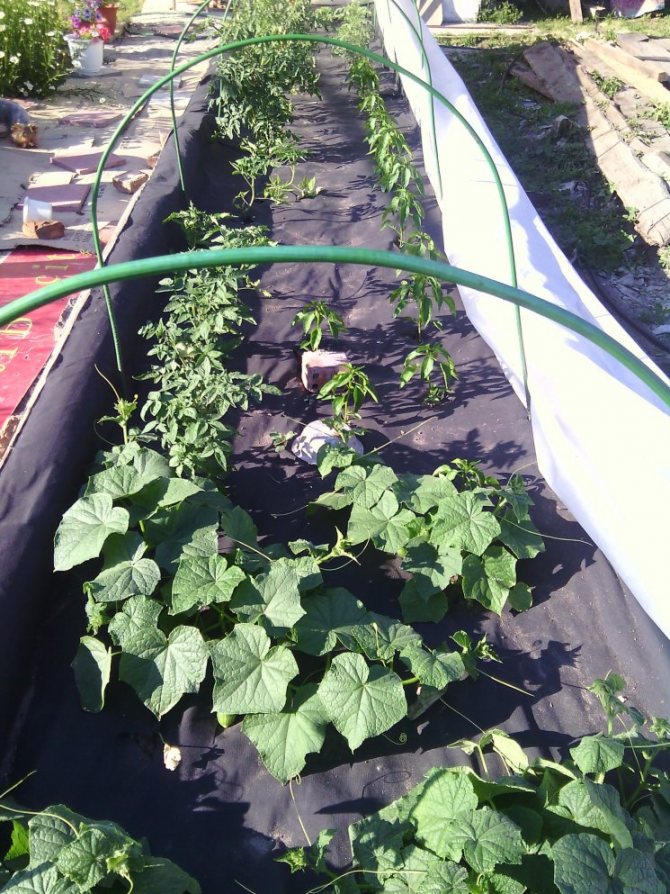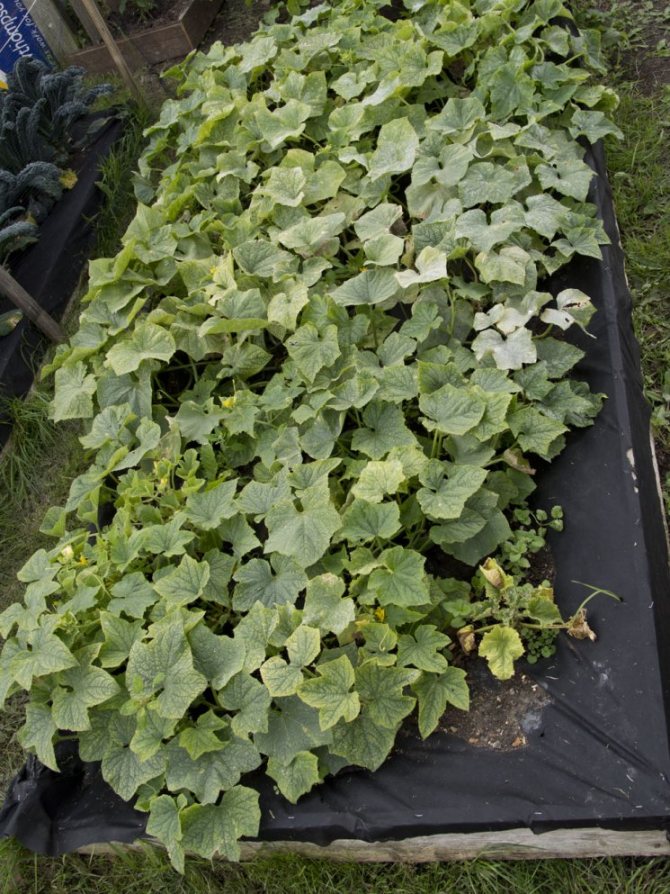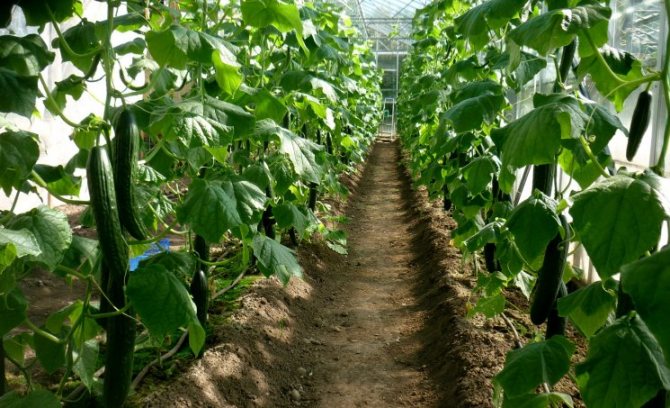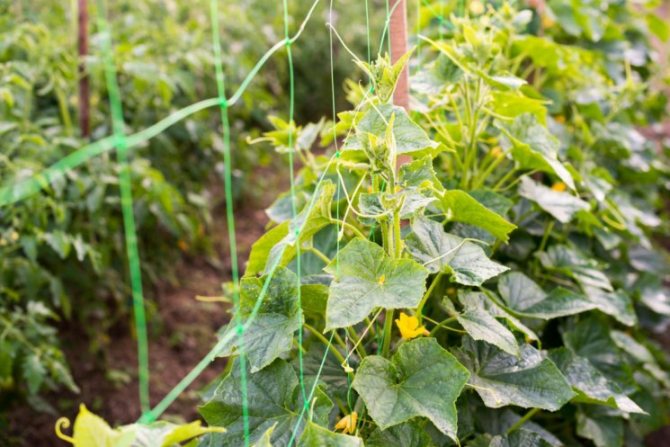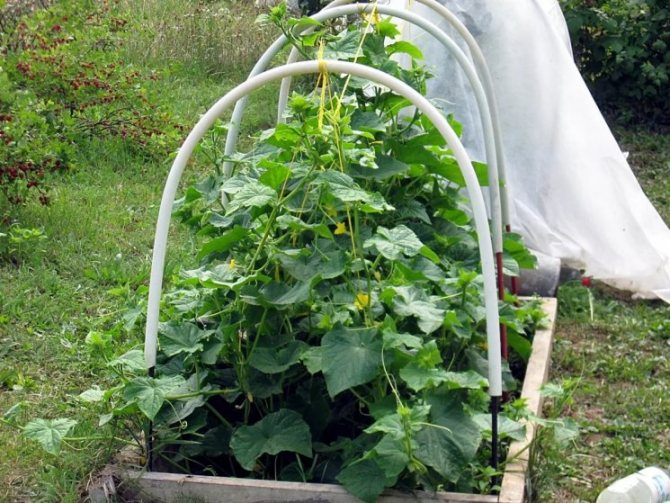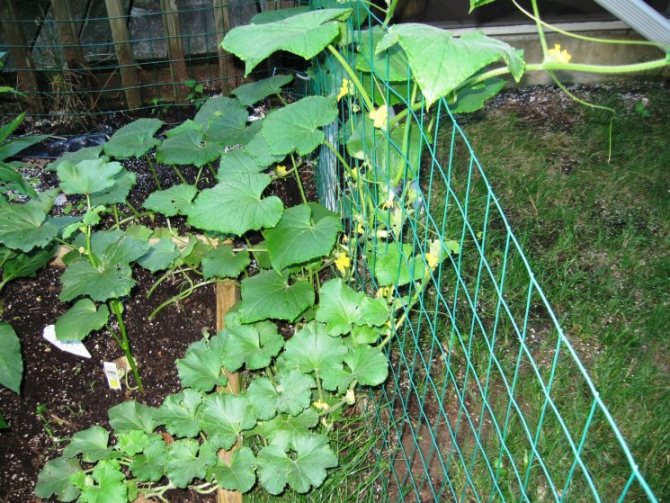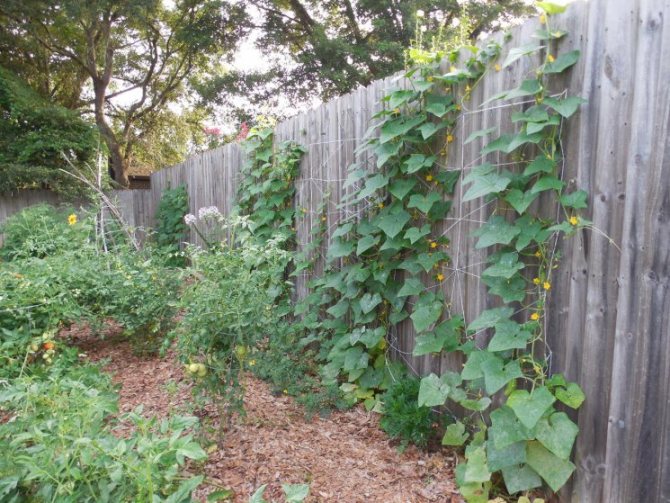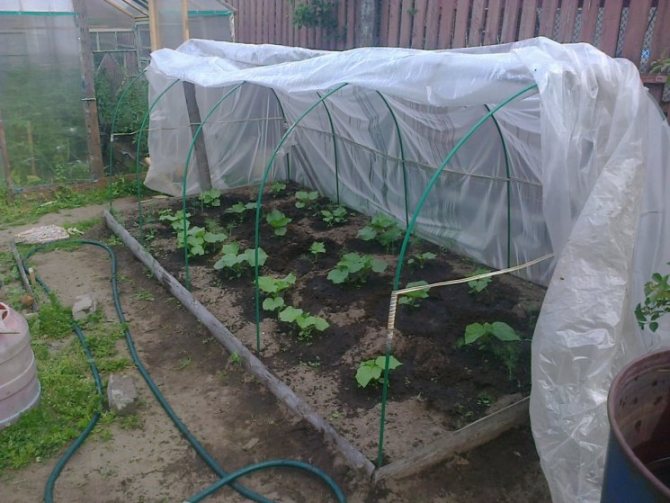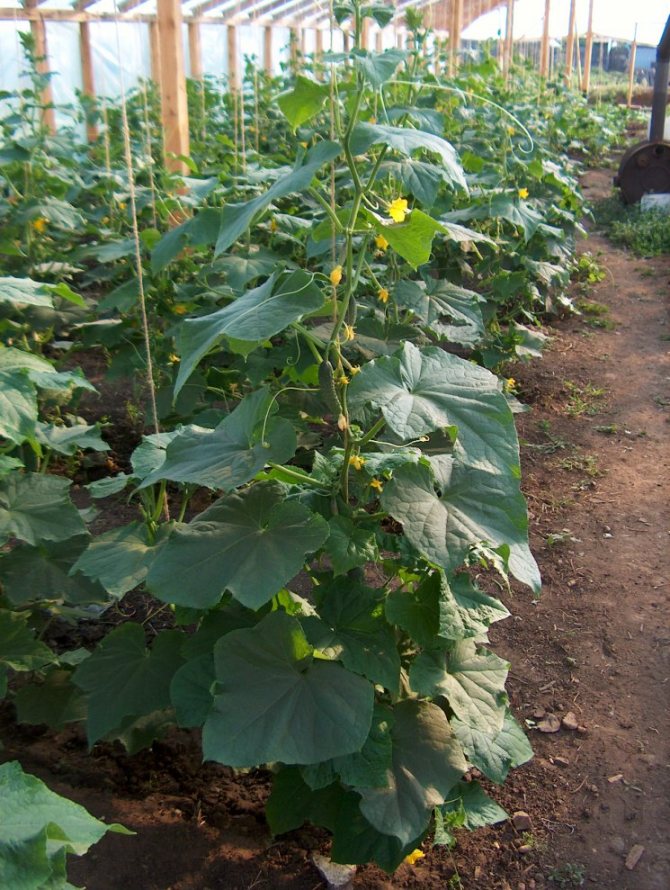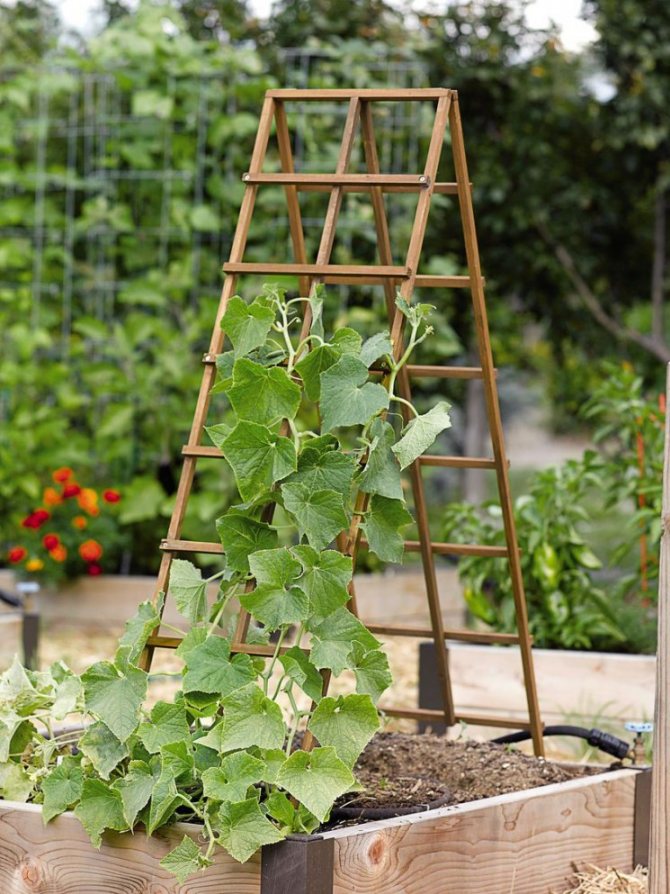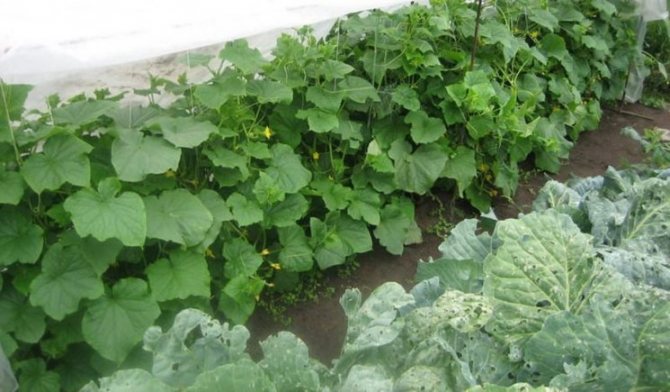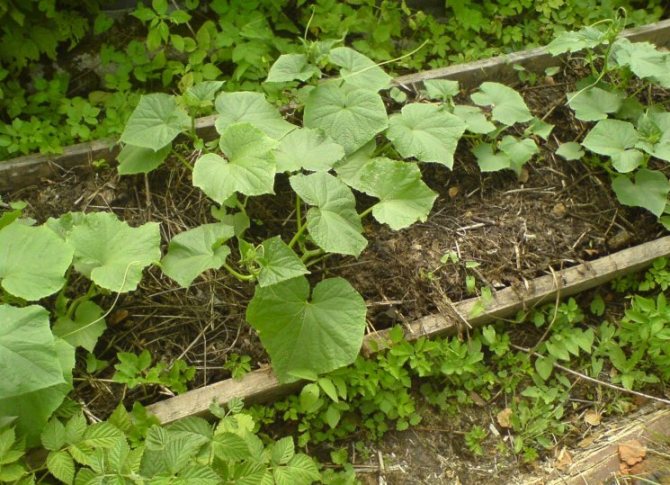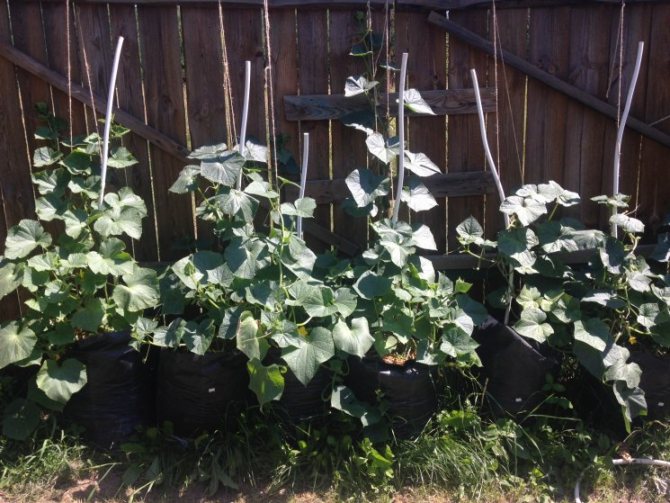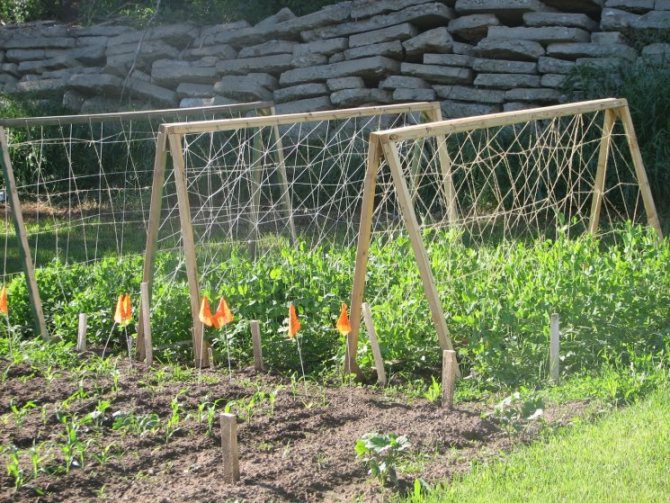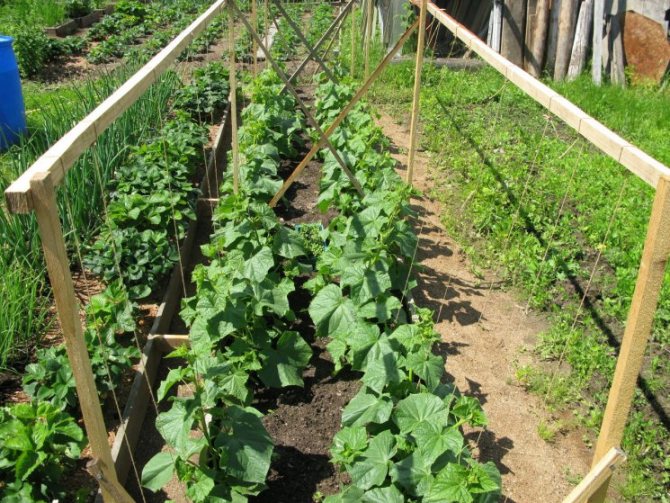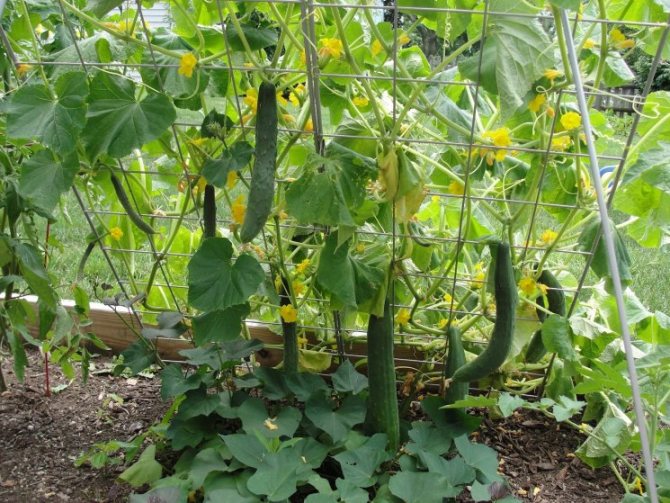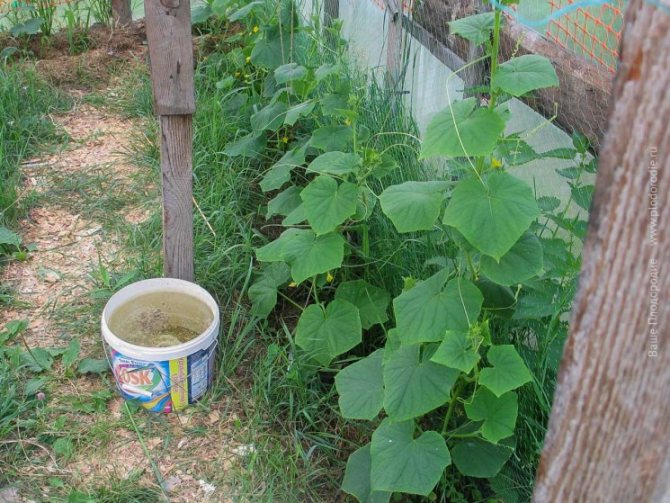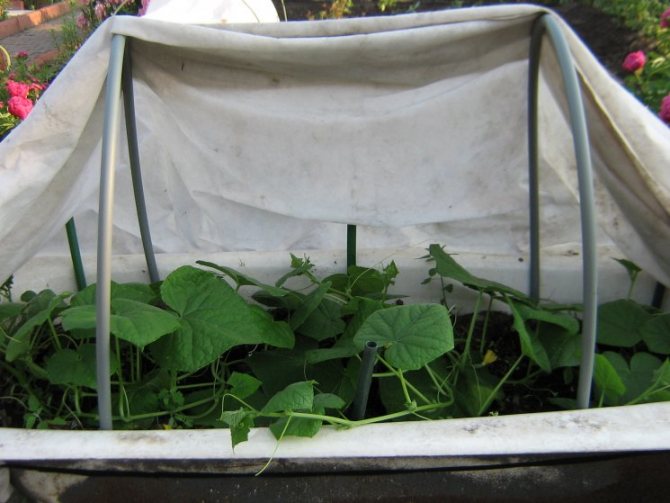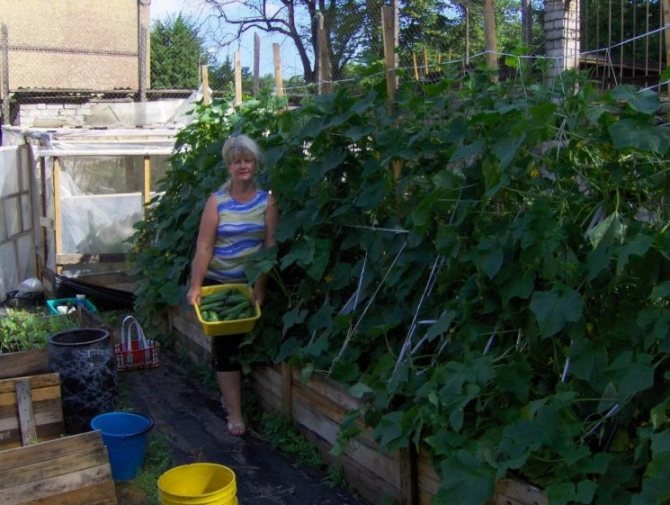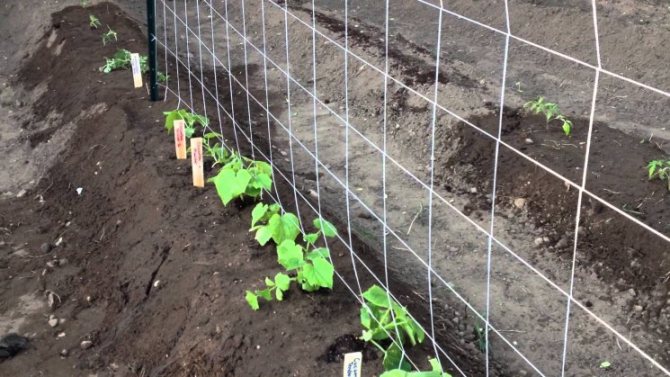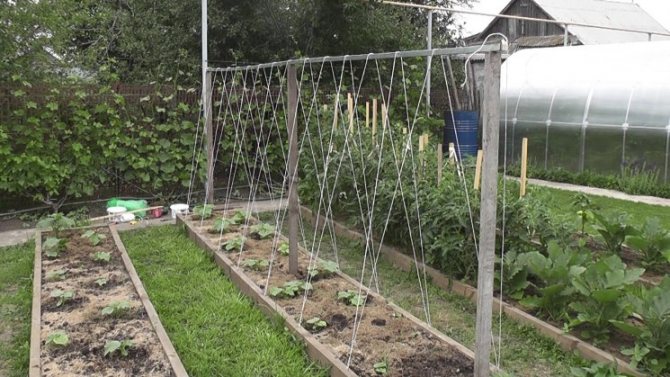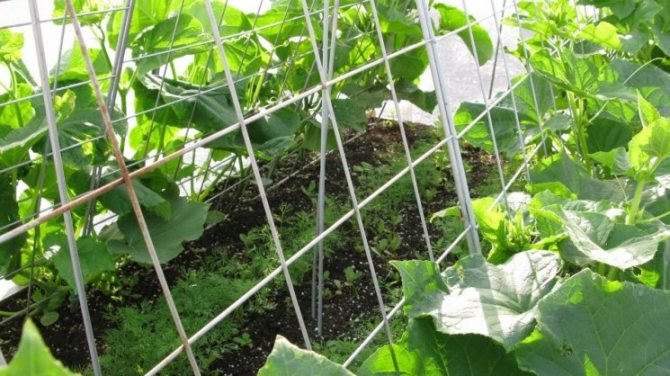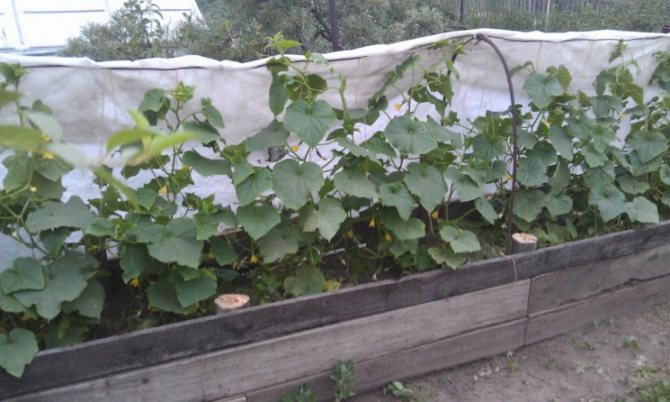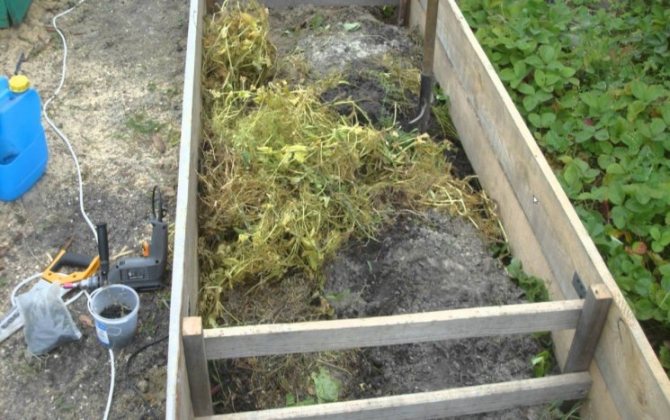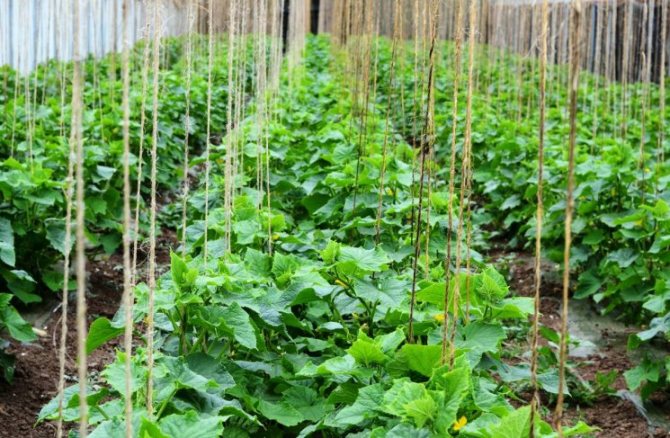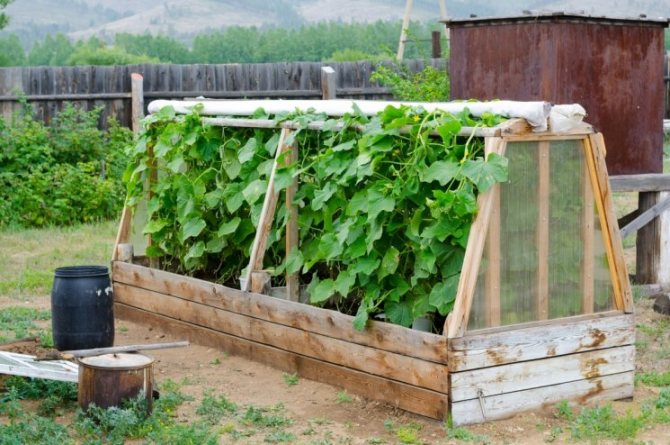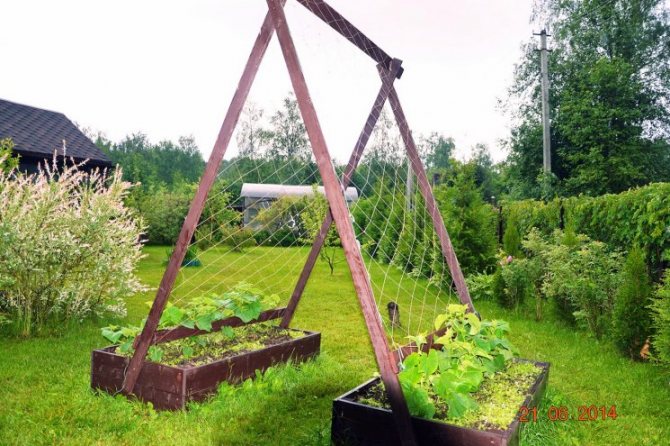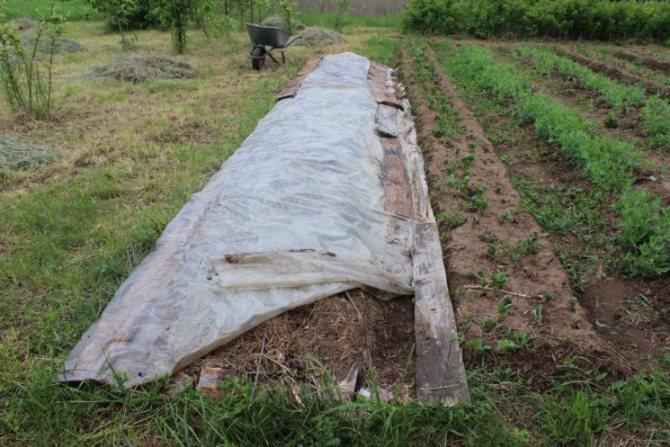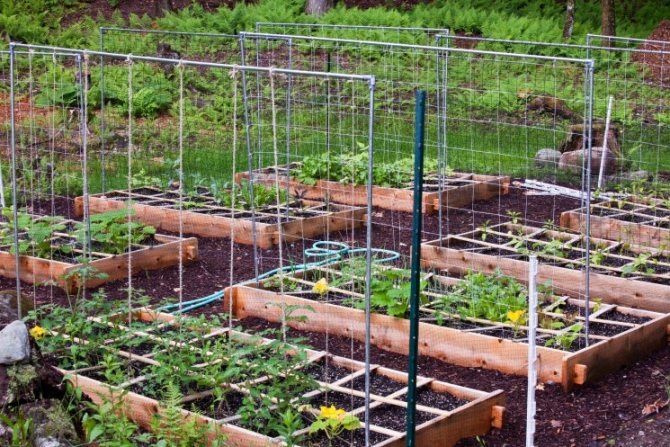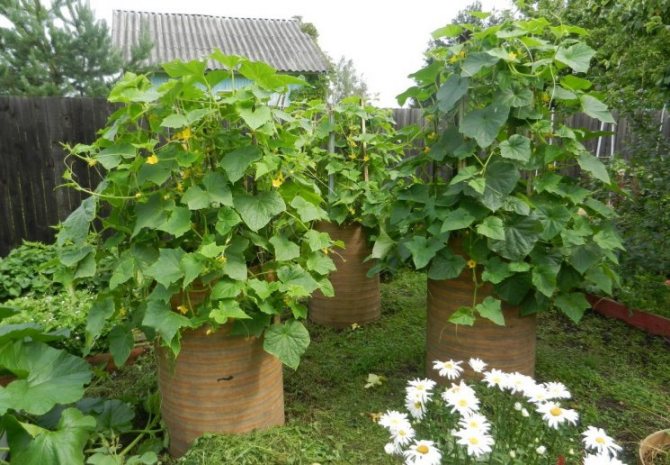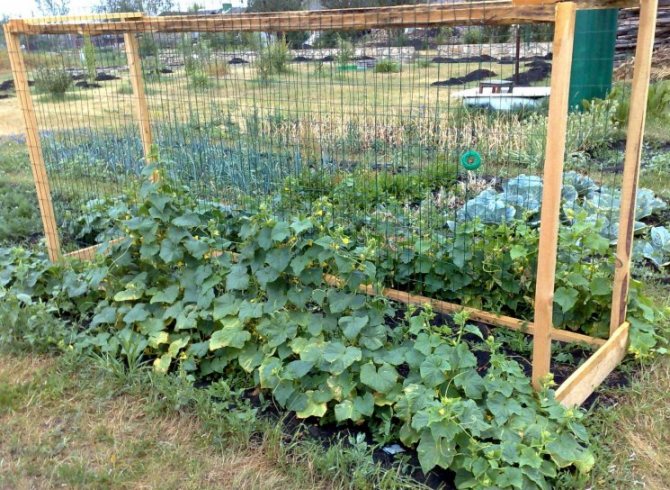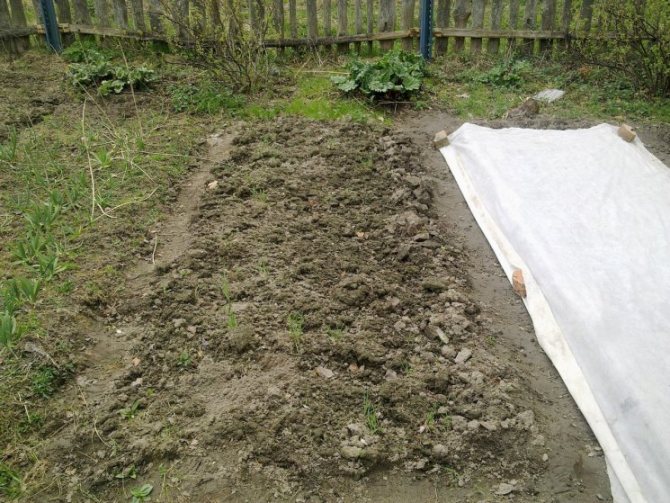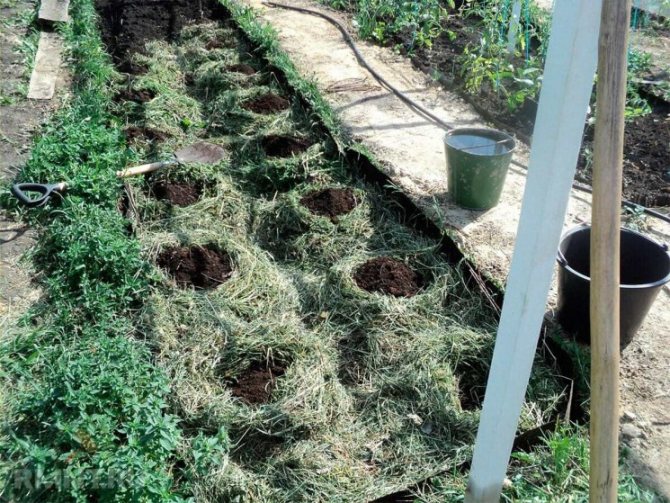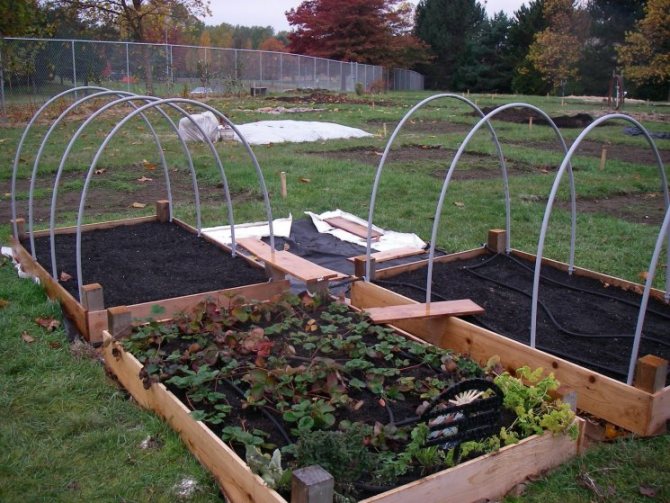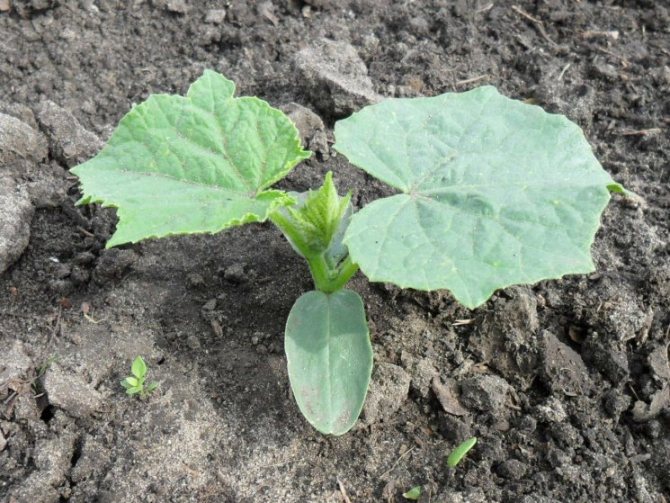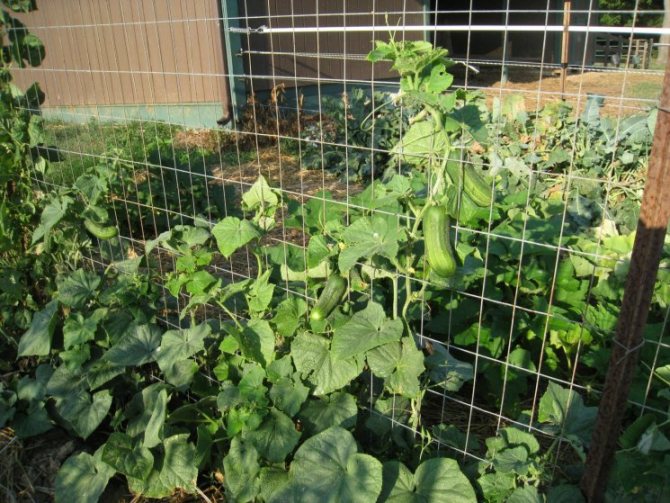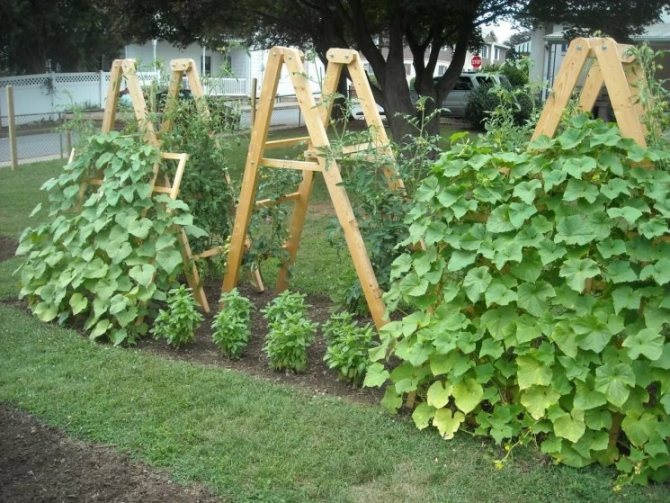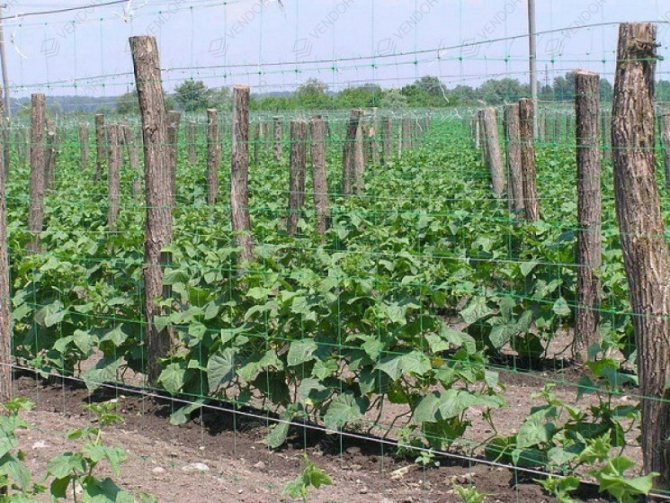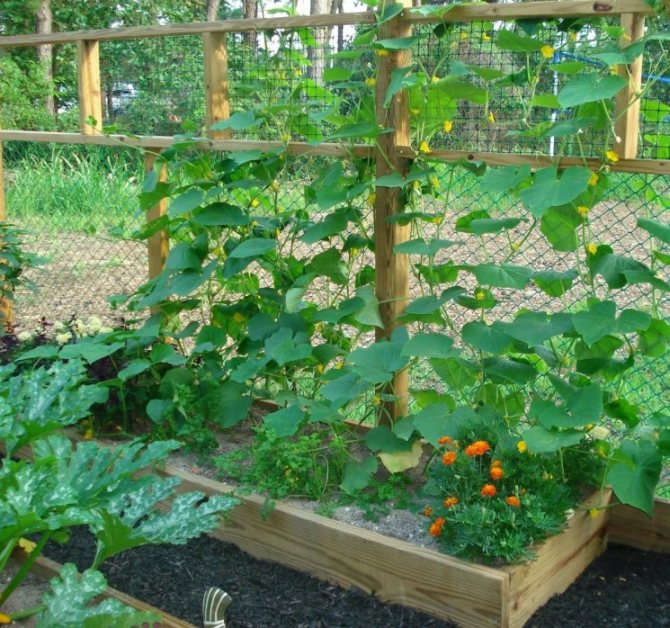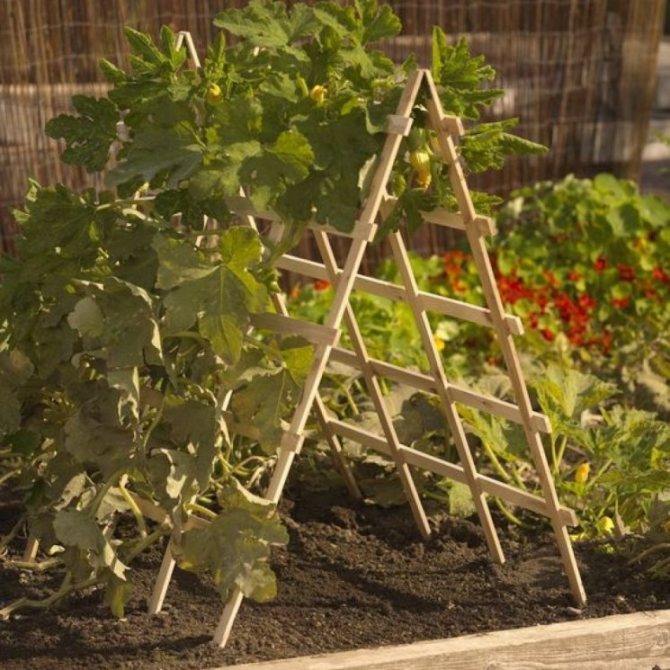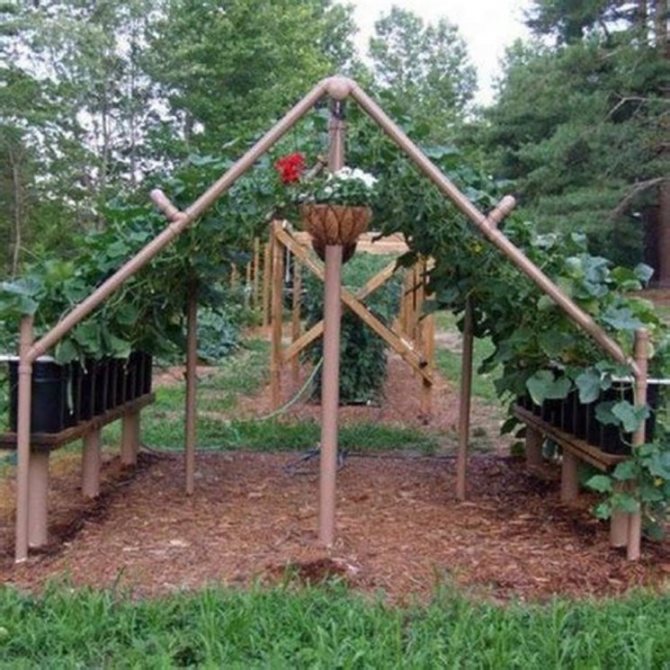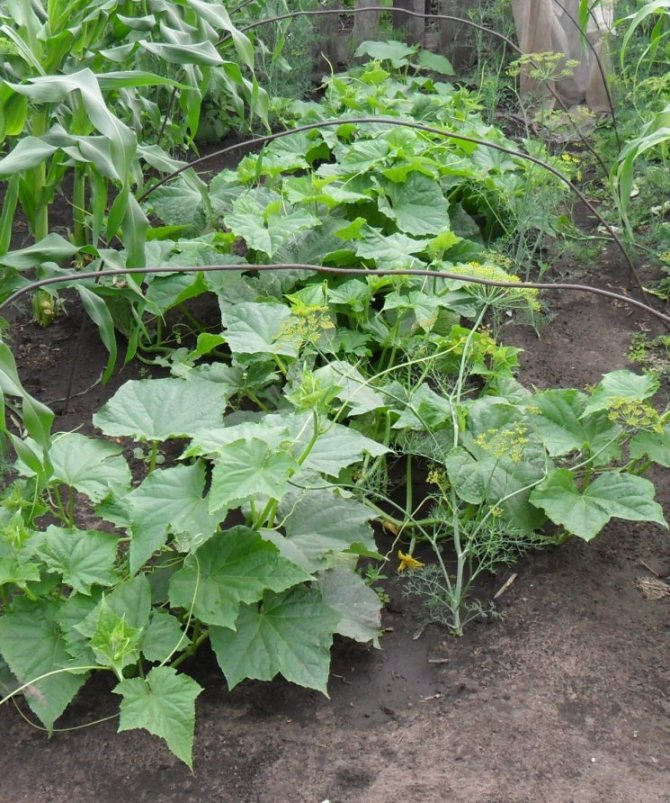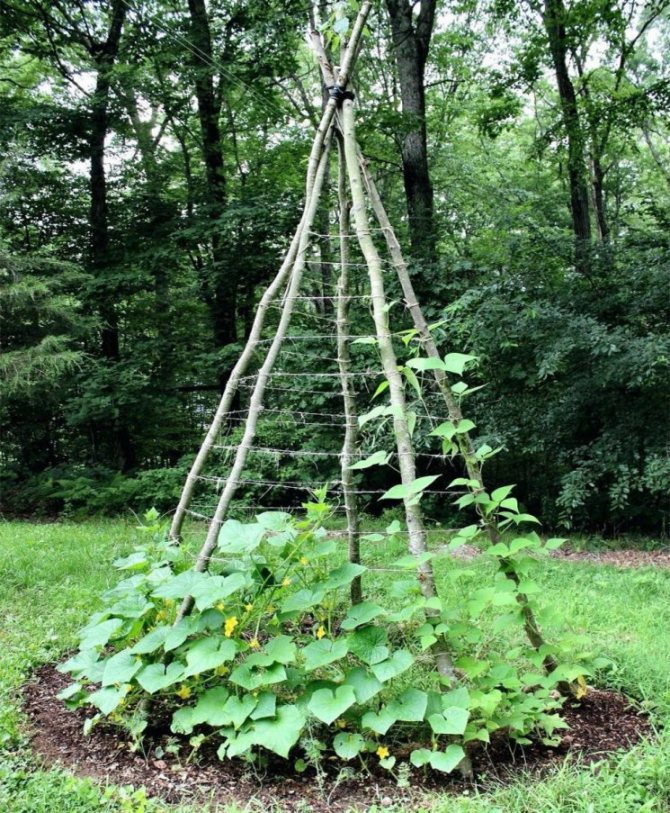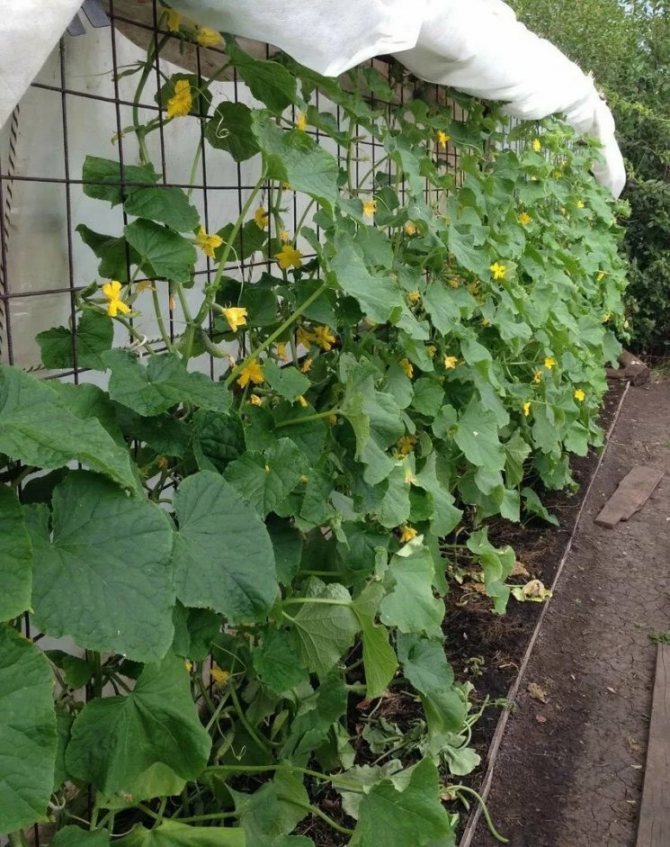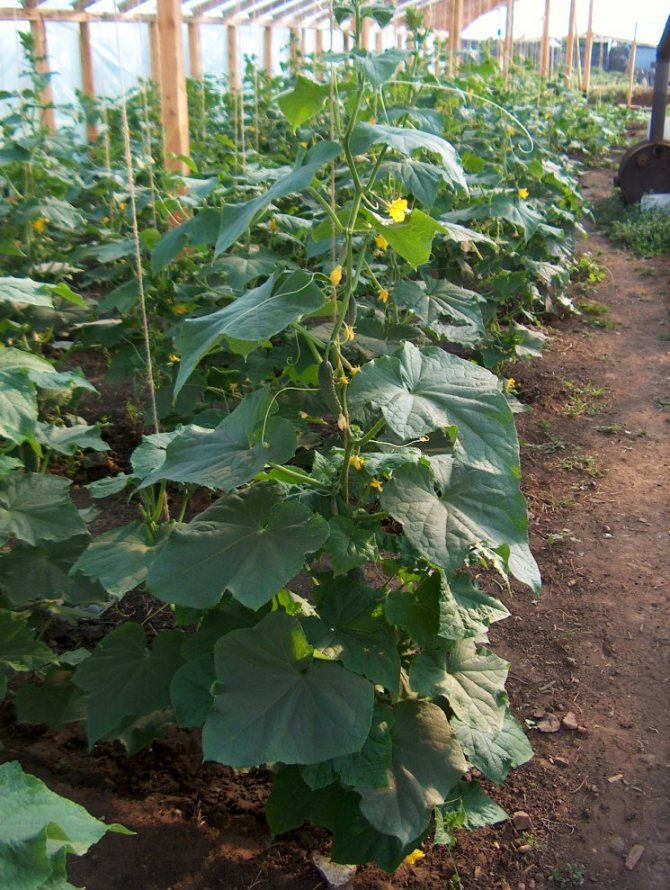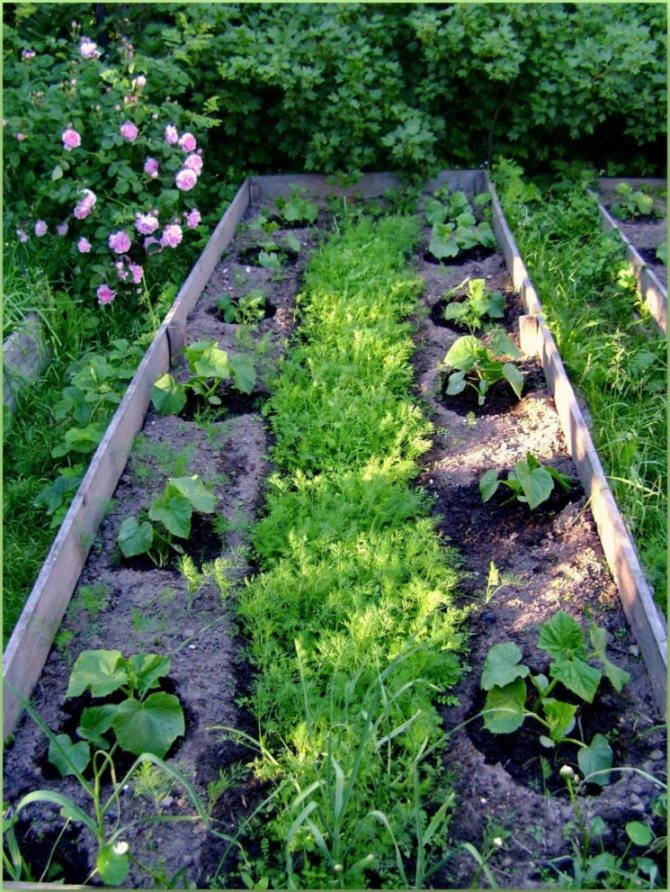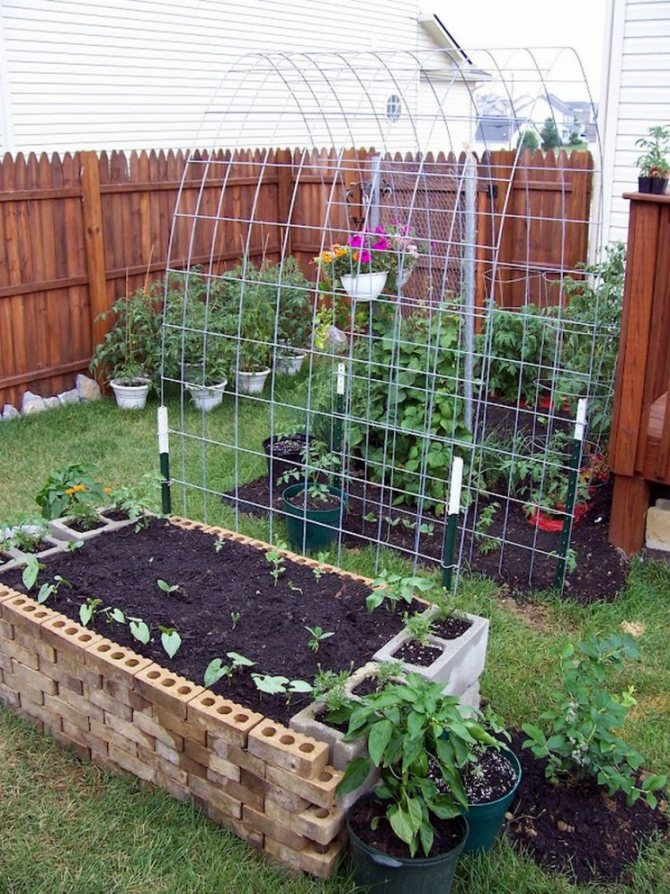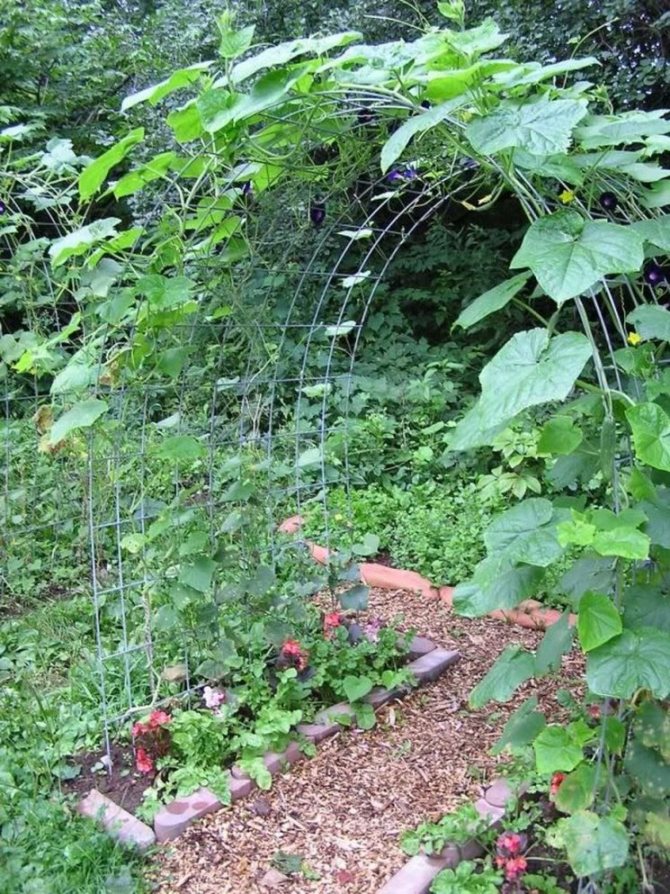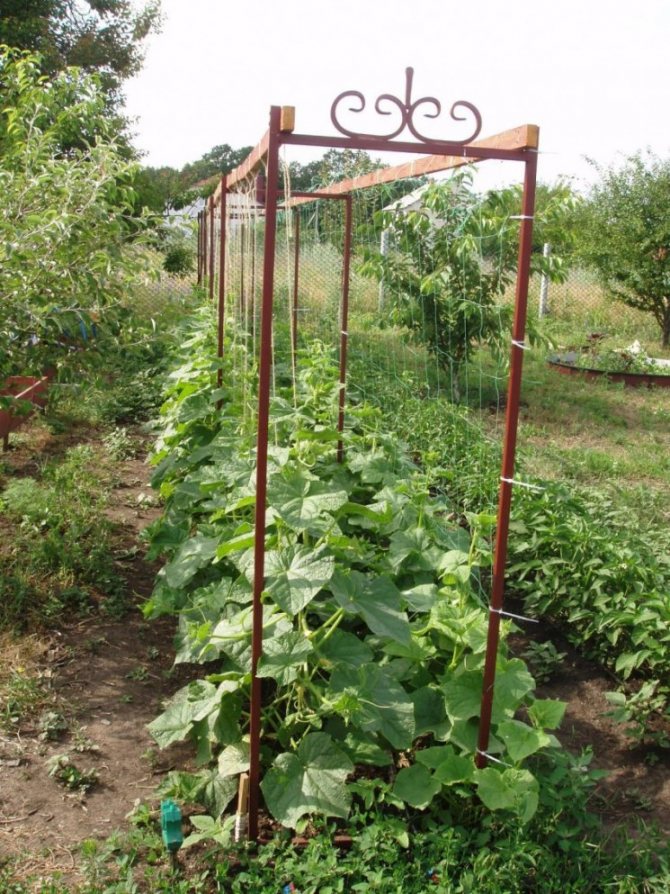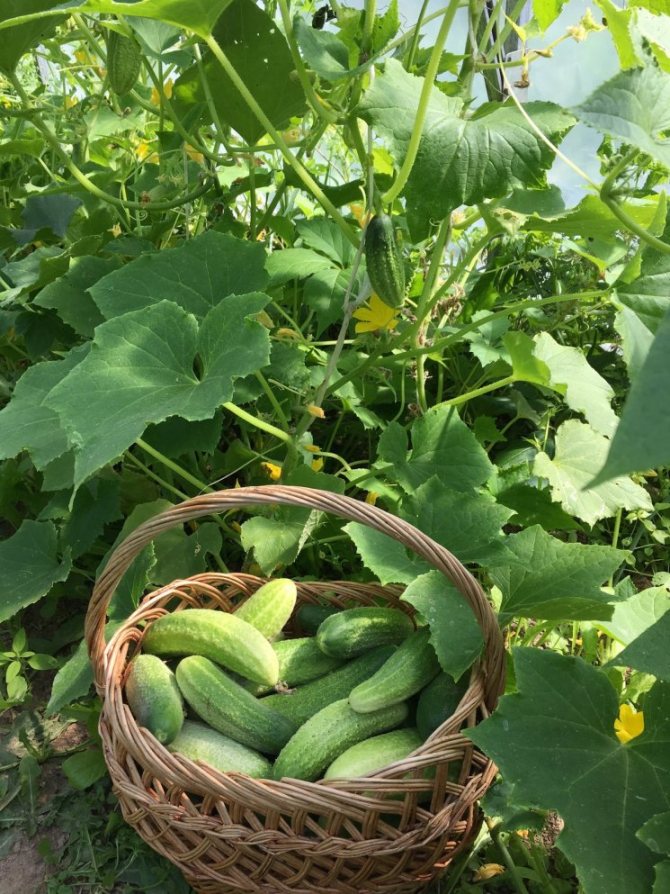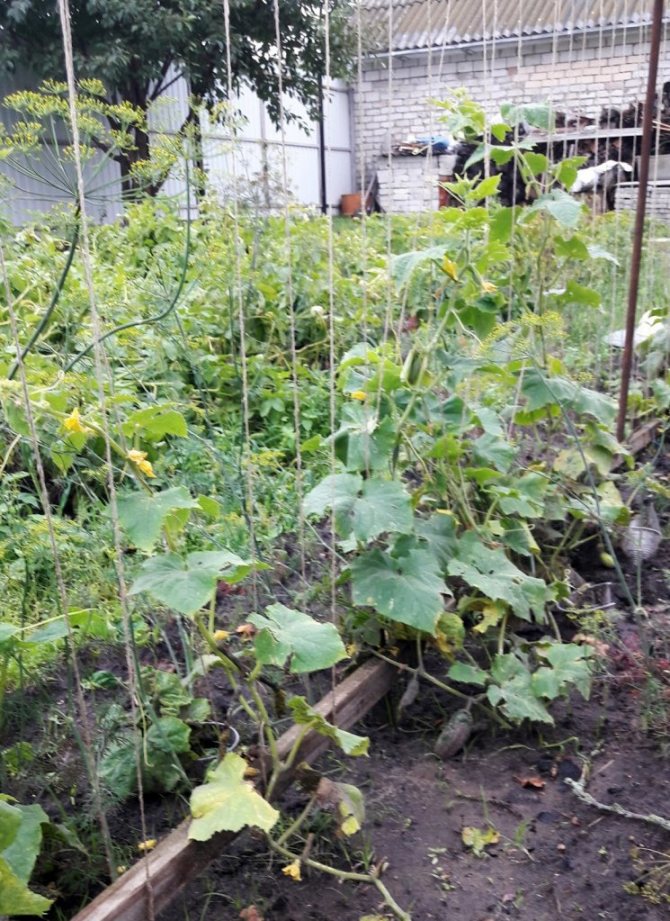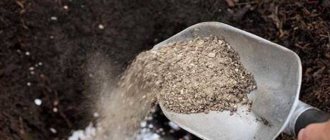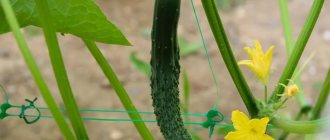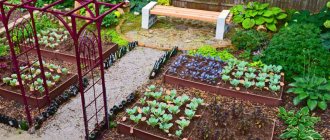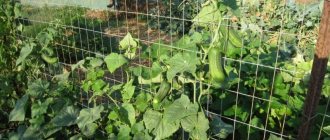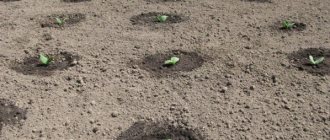Most of us love cucumbers. This garden crop can grow on almost any soil, in any garden. However, it gives the best yields in those areas where there is a lot of heat and moisture. How to make the right garden for our favorite cucumbers?
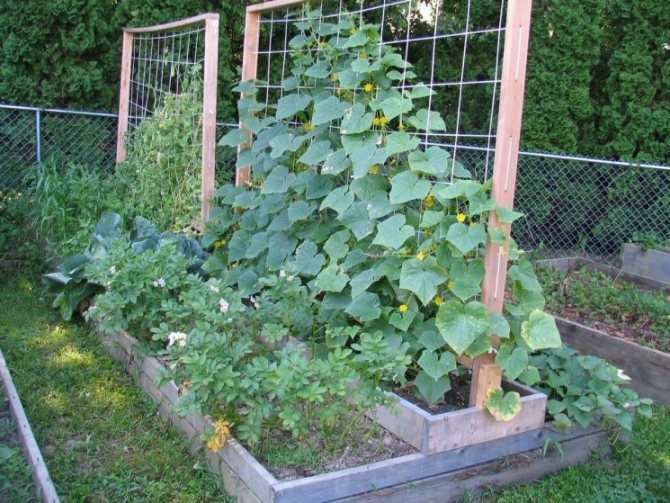
If there is a desire and need to get a harvest of cucumbers as early as possible, they must be planted in specially prepared insulated beds. These beds will help speed up the emergence.
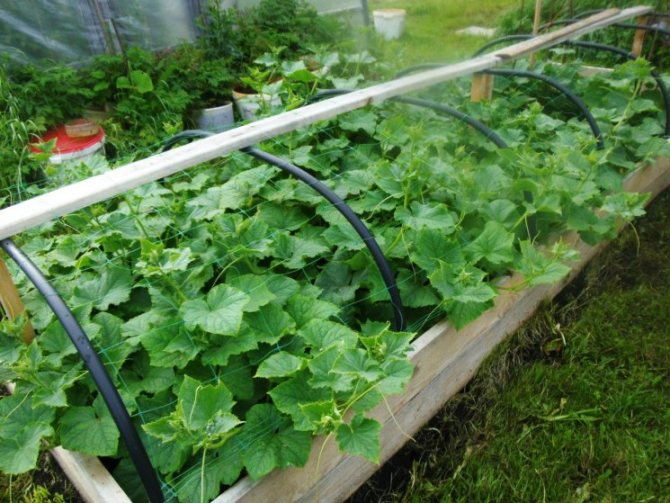

Warm bed
What is this "warm bed" and how is it better than the usual one? In the composition of such a bed there are food remnants, peat, food residues, sawdust, fertile soil.
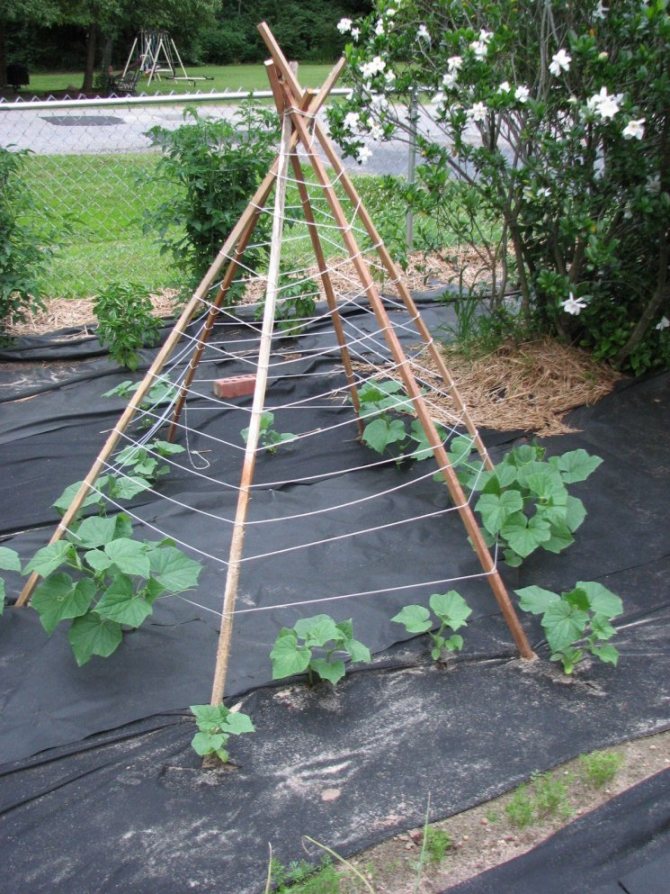

Due to the chemical reactions that take place inside the garden, enough heat is generated to keep the soil at a constant temperature.
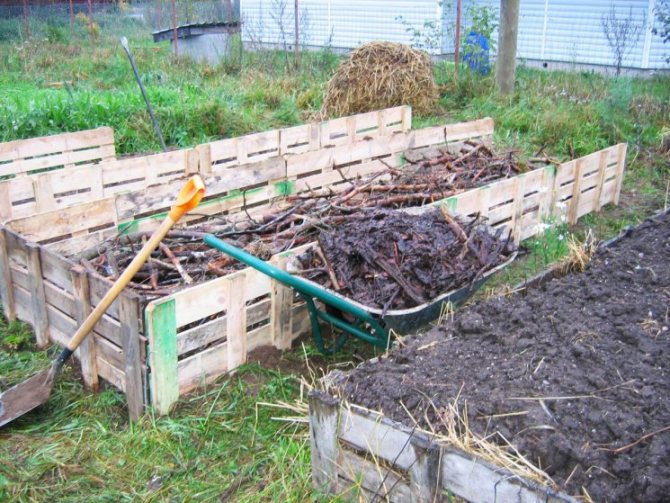

In order to make the correct warm bed, the following sequence must be observed:
- Remains of wood. This includes chips, twigs, small boards.
- Leftovers from plant food and leaves. Suitable peels from bananas, peeling from vegetables and fruits, onion peels and more.
- Compost or manure.
- Fertile soil.
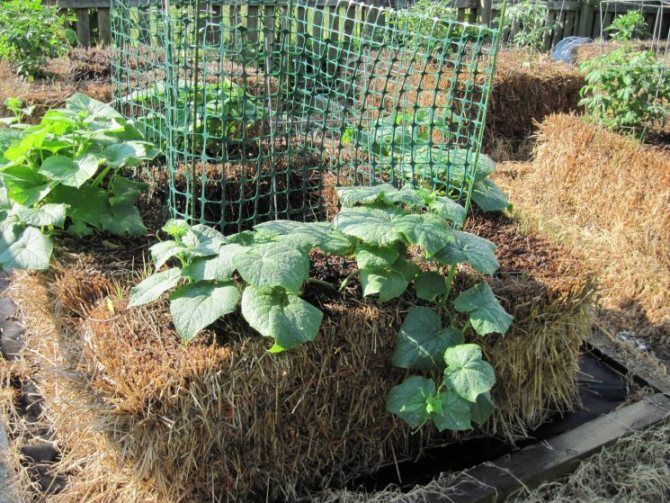

Components that are slowly decaying (wood residues) must be placed at the very bottom of our bed. Due to the fact that they will not decompose immediately, the effect will appear only after a few years.
A layer that will decompose faster (food debris, leaves) must be laid in the middle of the garden bed.
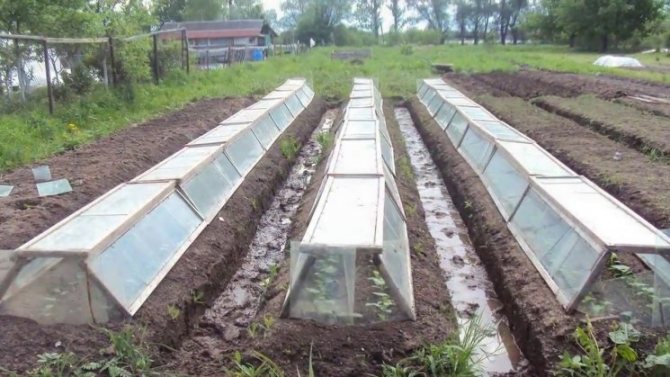

This layer takes about two to three years to decompose. Manure or compost is placed last. They decompose in one season.
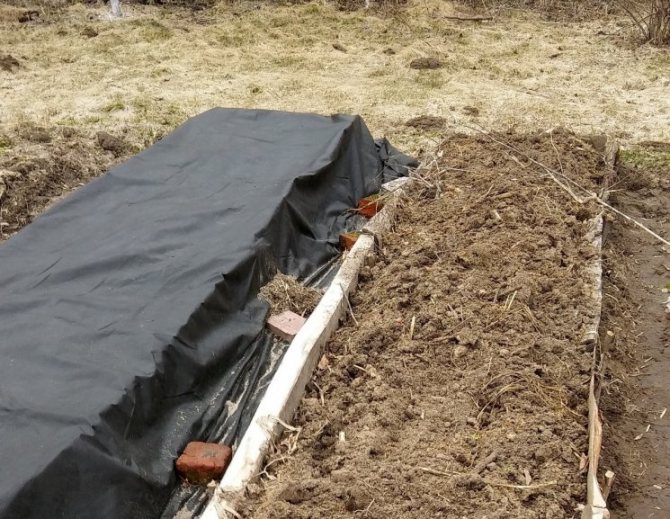

Collection of material
To organize a heated bed, the components are prepared in advance. It is not enough just to sketch a bunch of green mass of plants mixed with branches. Laying out materials in layers will allow you to do the work neatly. In addition, this technology will increase the service life. The layers are placed in the following sequence:
- Branches, chopped logs.
- Green mass (leaves, fruits, young shoots).
- Manure or humus.
- Fertile soil.
The bottom layer is drainage. Chopped branches are used for it. In addition to removing excess moisture, wood is able to absorb it and give it to the soil during dry periods. By making the layer height 10-15 cm, you can increase the periods between waterings by one and a half times. Plant remains are placed on top of the chips. A small amount of household waste can be added to these. The third layer is humus or ready-made compost. The presence of ready-made "fuel" in the bed will speed up the process of preparing the soil for sowing. If the soil is prepared in the fall, this layer can be excluded.
Wood ash is poured between the heating layers and the fertile soil. It is a source of macro- and microelements (potassium, calcium, phosphorus). It can also be watered with nitrogen fertilizers. In addition to accelerating the growing season, ash stimulates the development and work of bacteria. If the bed is made in spring, all layers are poured abundantly with hot water, covered with an opaque film. High temperature and humidity trigger the necessary processes inside the layers. The last stage is backfilling of fertile soil. The height of the layer depends on the root system of the plants (usually 15-20 cm).
Warm beds - pros and cons
The advantages of such beds include:
- Early planting of seedlings, and accordingly we will get early fruits.
- The amount of fertilizer used to feed the plants is reduced. There is already enough manure in such a bed. Therefore, there remains only the need to nourish with potassium, magnesium and trace elements.
- Seedling roots are always kept in a warm place. Thanks to this, all bad conditions are better tolerated.
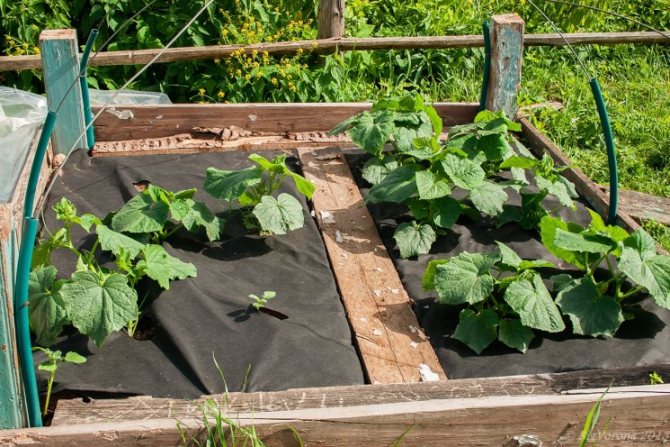

Unfortunately, there are always drawbacks. Warm beds are no exception. Due to the use of manure, nitrates can accumulate in the greens.
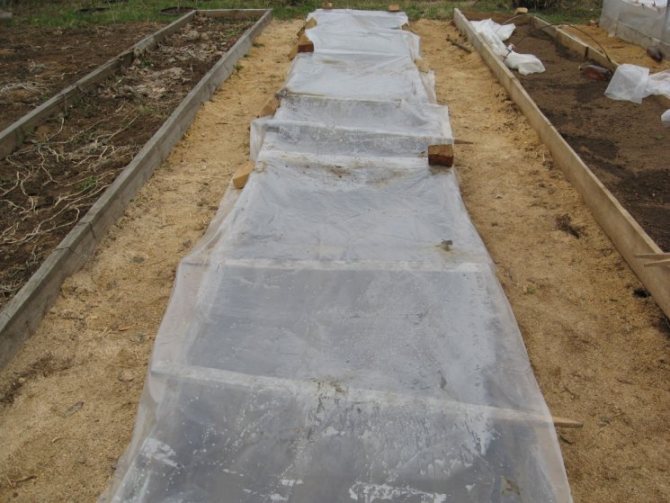

If the weather in the spring is warm enough, the seedlings may "burn". This nuance is most often observed in the southern regions.
Operating principle
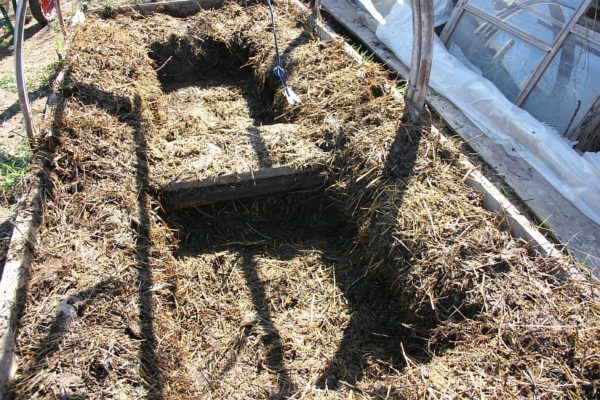

As the name suggests, the bed should be warm, however, no heating devices are installed in it. The temperature in the soil rises due to complex physical and biochemical reactions. They proceed with the participation of bacteria. In the initial period, heat is released slowly. This is due to the "maturation" of the compost, when bacteria change and multiply. When the process stabilizes, the temperature of the soil becomes constant.
Compost is a mixture of leaves and small twigs. The correct proportion when laying them will allow you to use the garden for up to eight years. The wrong composition, on the other hand, stops the decomposition process. This is due to the fact that the green mass is a source of not only nitrogen. It releases ammonia when it decays. An excess of the latter can kill bacteria, which completely stops decomposition.
Branches in compost are a source of carbon. Reacting with hydrogen, it forms a bog gas - methane. For a prolonged reaction, 25% of the green mass is laid in the garden bed, the rest is branches and brushwood. When the "fuel" for bacteria runs out, the structure begins to cool down. Then it is dismantled and a new one is made in the same place or placed in another area.
Deep bed
It is considered an ideal option for growing cucumbers in regions with insufficient moisture.
Such a bed is located below ground level. It can be used to grow plants for three to five years. Not very suitable for greenhouses.
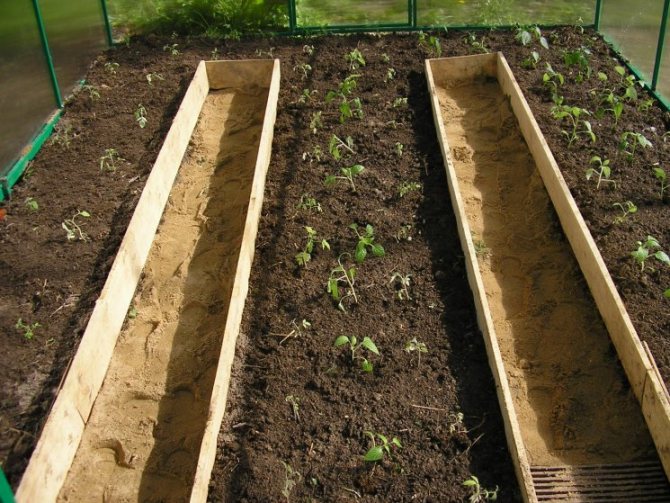

This option is good because you will not spend a lot of effort and money to create it. It retains moisture well, it does not need to be dug up every year.
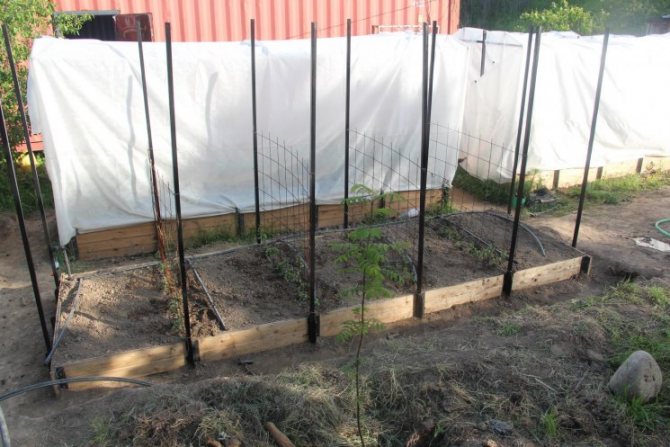

However, there are also disadvantages of such a bed - in case there is heavy rainfall or the gardener overdoes it with watering, then it can be very washed out.
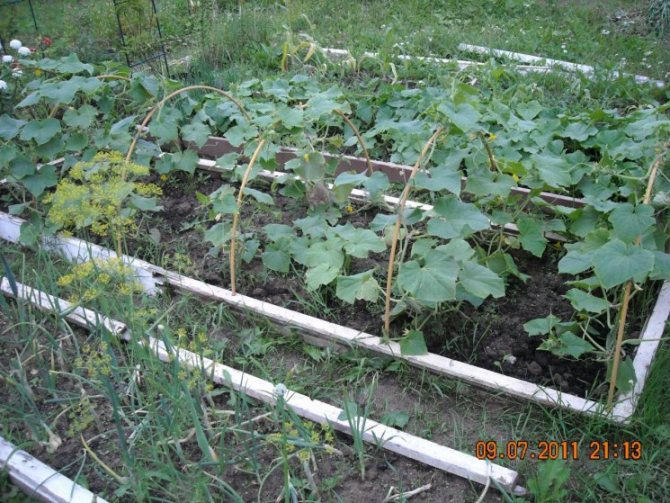

Due to the excessive amount of water in such a bed, the roots suffer, up to their complete decay. All parasites that crawl on the ground get on plants without any problems.
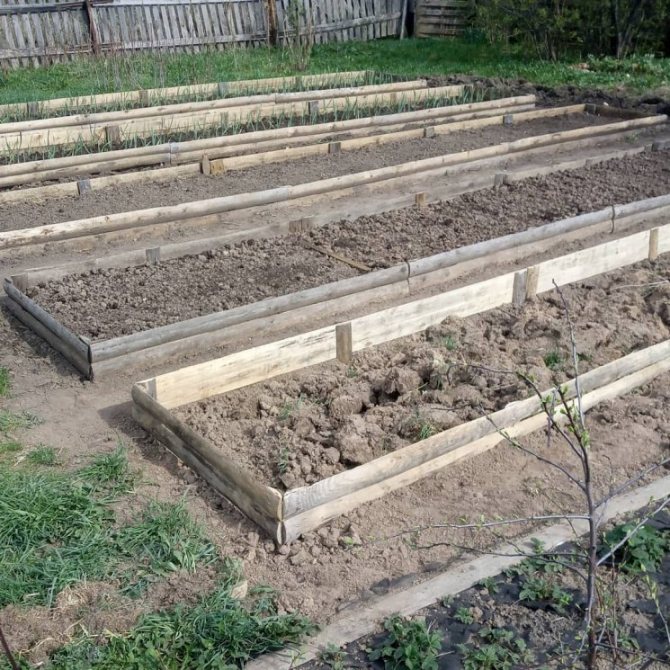

Raised bed
It is considered the best option for the regions of the north and middle latitude. Such a bed is raised above the garden. She serves up to five years. In the northern regions, you can find the arrangement of such beds for cucumbers, not only in the open ground with your own hands, but also in a greenhouse.
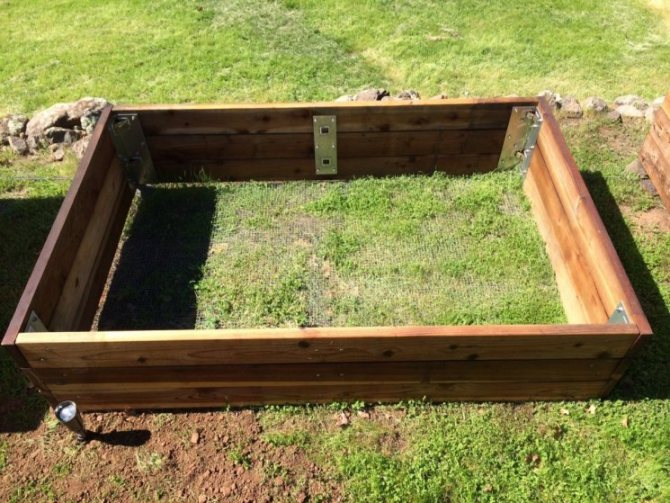

The advantages include - complete warming up by the sun's rays. In such beds, cucumbers will suffer less in the event of a cold snap. The water will not stagnate.
It is more convenient to look after them - weeding and watering becomes much easier. Parasites that crawl on the ground practically do not get into such beds. The disadvantages include: the cost part.
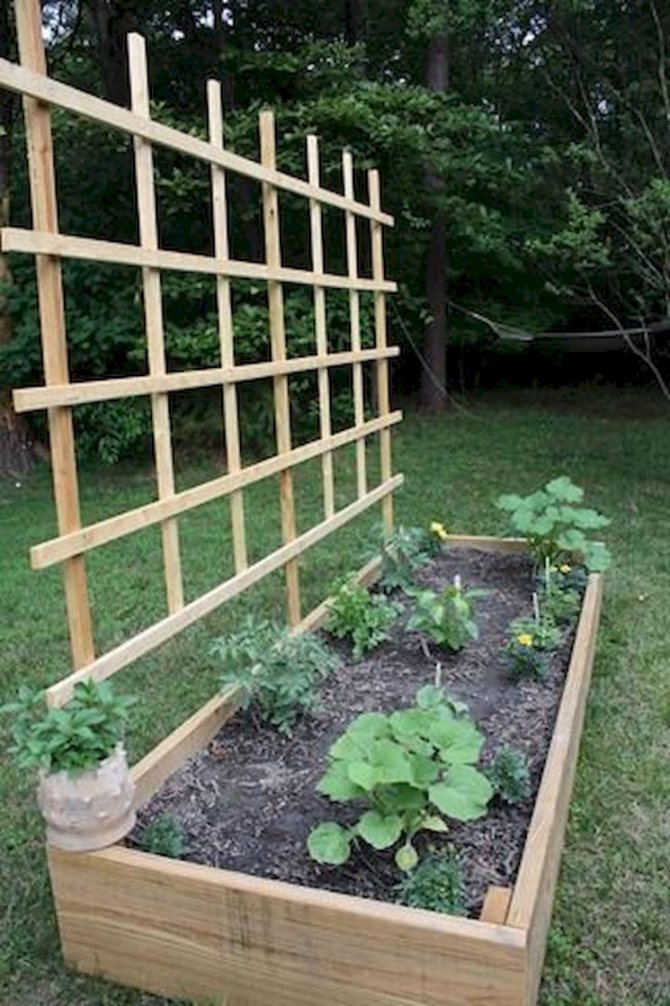

How to make a cucumber garden? In order to build such a bed, you will need a lot of effort and finance.
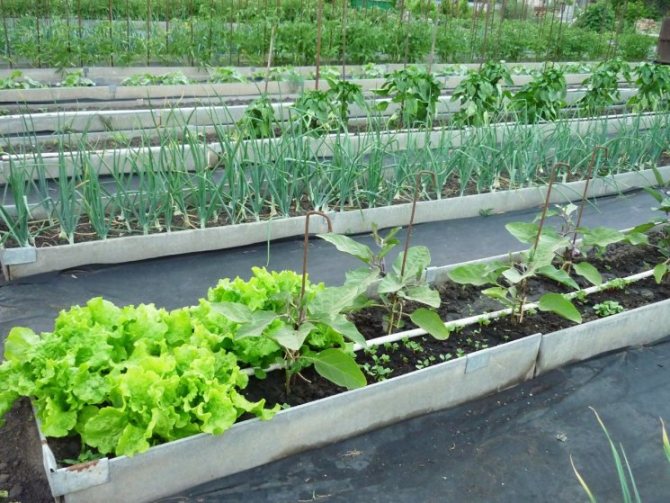

It will have to be watered much more often, since the soil in such beds dries out very quickly.In the event of a very hot summer and scorching sun, there is a chance that the cucumbers will burn.
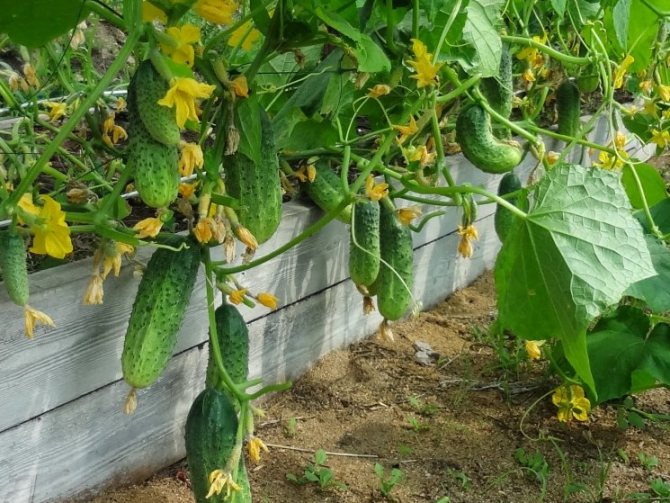

Vegetable growing technology
Plants are placed in one or two rows (depending on the width of the ridge). Between neighboring bushes, it is necessary to maintain at least 60 cm.With a seedless growing method, 2-3 seeds are thrown into one hole (weak shoots are then removed). For a formed bush, a hole is made, at the bottom of which fertilizer is poured. Then they are watered with warm water and the seedlings are planted.
Until the air temperature stabilizes and reaches + 15 ° C, the bed is covered with polyethylene. So that the latter does not touch young shoots, metal or plastic arcs are installed for it. In summer, the film can also come in handy: greens will be poured during fruiting only if it is at least + 18 ° C at night. Observing several rules, you can get a high yield:
- The ground near the roots is periodically loosened. No crust should form on the soil surface.
- Weeds are removed in a timely manner.
- The lashes are evenly guided and new processes are tied up.
- Planting is systematically watered and fed.
- When collecting the lashes, they do not injure.
Soil preparation
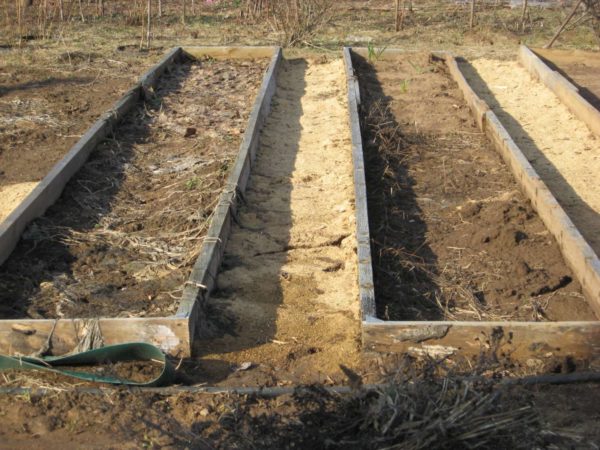

The final layer in a ridge of any design is fertile soil. Getting a high yield depends on the preparation of the soil. All plants need a nutritious, if possible light, loose, water and breathable soil. Heavy or sandy formulations are not able to provide the required conditions. Such soils need refining, which consists in the introduction of "rippers", additional organic matter, as well as in other methods. The laid soil is watered with hot water and covered with plastic wrap, securing the edges securely. It will take from several hours to 2 days to warm up and start the decay process.
No manure
If it is not possible to use manure to heat the beds, you can use compost. It is a natural natural fertilizer obtained as a result of the decomposition of various organic substances, the activity of soil bacteria, fungi and insects. At the end of decomposition, a loose brown mass is obtained with a high content of nutrients in an accessible and easily assimilated form by plants. Compost is a good substitute for "biofuel". It allows you to organize a cucumber garden without using manure.
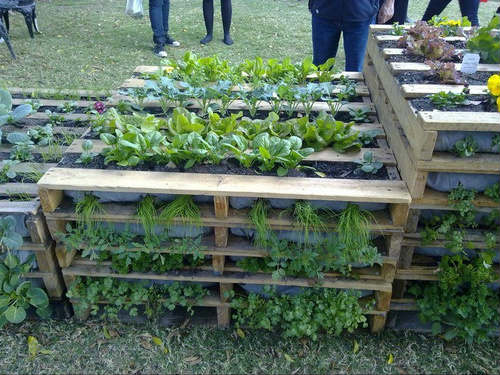

You may be interested in:
Do-it-yourself garden beds: photos and videos To grow a good harvest and be proud of the order in your beds, the process of organizing the space should be ... Read more ...
With biofuels
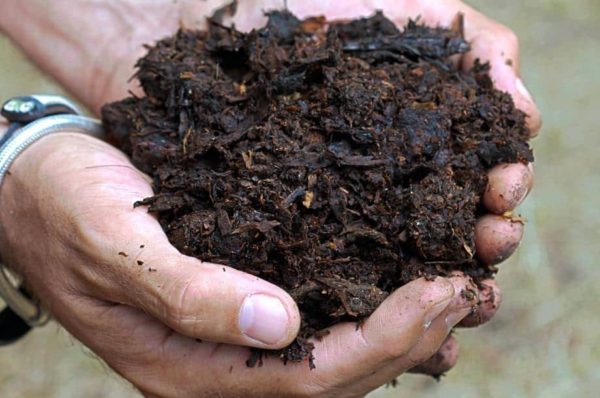

The design of a warm bed for cucumbers with manure is not much different from a compost one. A characteristic feature is the use of humus. The use of fresh organic matter from manure can aggravate the vegetation of plants, and insects living in it can damage the root system. Before introducing the material, he is allowed to lie down for several years. The first layer in the garden bed is drainage. Then, thick paper or cardboard is placed between humus and chips. The last to fall asleep is the main soil.
For your information!
When pure manure is used to create a ridge, it is advisable to sow cucumbers on it after several seasons.
Preparing a warm bed for cucumbers in the garden and in the greenhouse in autumn or spring is a necessary measure to increase the yield of the crop. In addition, the possibility of early sowing allows you to remove the first cucumbers earlier than the standard ripening period.
A bed flush with the ground
It is considered the simplest type. It is done quickly and easily. In this embodiment, the bed is raised up to five centimeters above ground level. She serves only a couple of years.
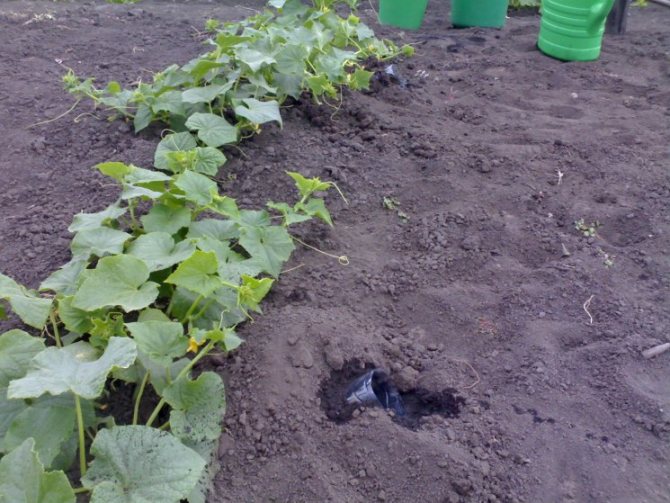

The disadvantages include the fact that the edges are easily washed out during heavy rains, as well as with excessive watering. This is fraught with the fact that useful substances can be washed out from the soil.
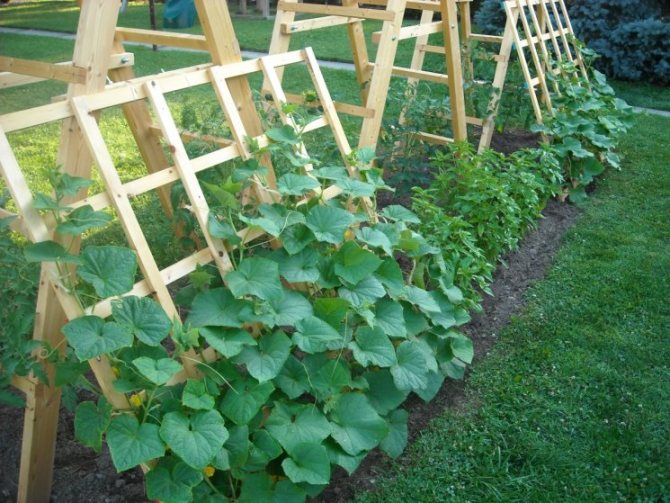

Periodically, you will need to strengthen the edges of the garden for cucumbers in the open field. All parasites easily get on plants.
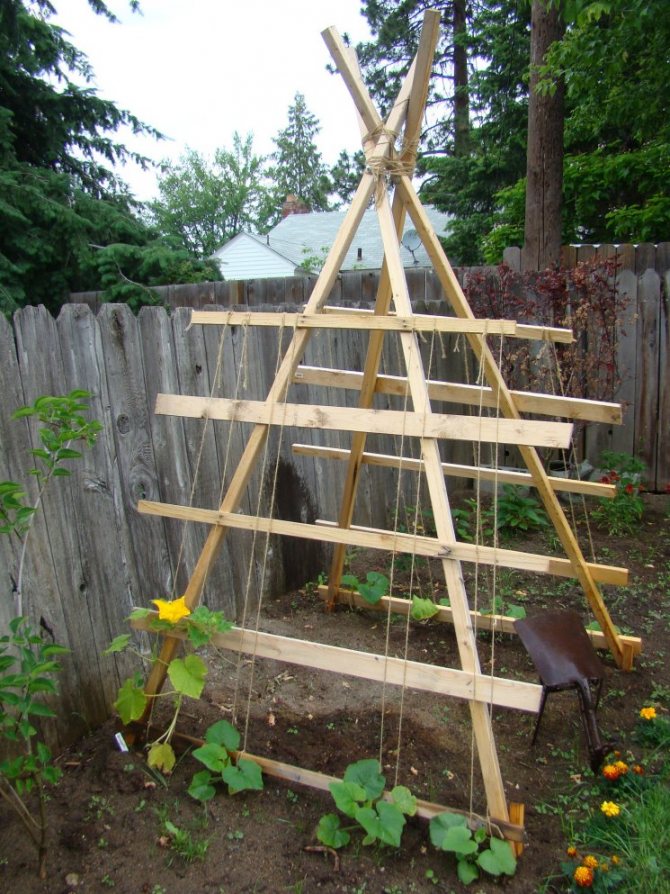

Different types of cucumber beds
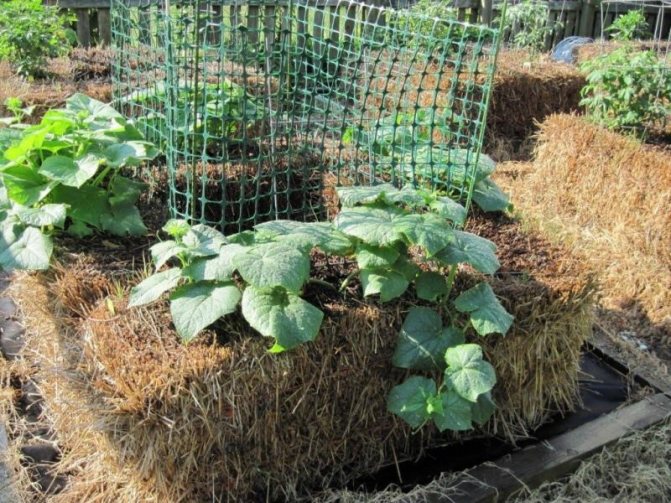

For good growth and development, cucumbers need soil rich in organic matter, therefore, when arranging a garden for growing this vegetable, humus, grass, branches, food waste and other organic matter are introduced into it. Such additives not only improve the nutritional value of the soil, but also generate heat during decomposition.
The introduction of organic matter is the main condition for arranging a place for planting cucumbers. The beds can be deep and high, warm and regular, suspended and multi-stage. Among gardeners, the following types of ridges are especially popular:
- warm;
- dung;
- vertical;
- mobile.
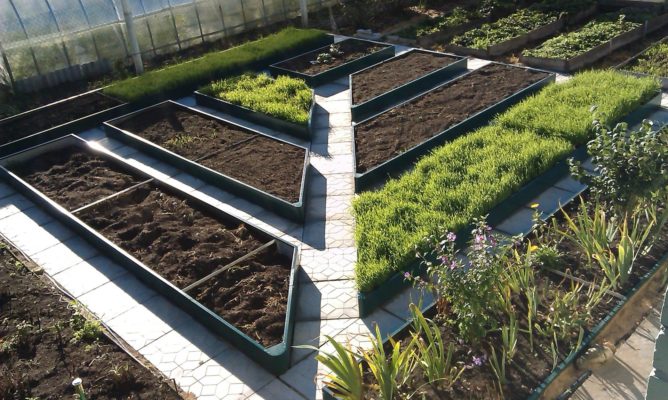

The shape of the beds depends solely on your imagination: they can be made square, rectangular, round, in the form of a trapezoid, in the form of any objects, animals
Recommendations for planting cucumbers in the beds
Experienced gardeners recommend listening to advice regarding planting in open field cucumber beds.
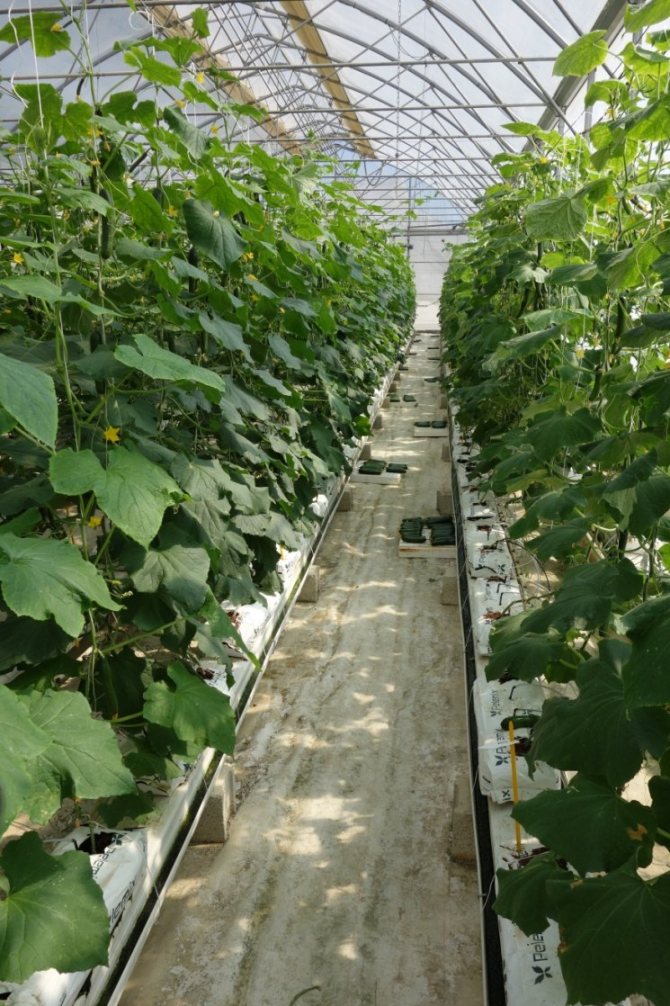

Be sure to first figure out when to plant a vegetable crop. It is recommended to plant in the spring, when the air temperature will be kept at 15 degrees Celsius.
Remember to consider the climate in your region. For example, gardeners living in the north can plant cucumbers in their beds at the end of May, and the central regions begin to plant in mid-May.
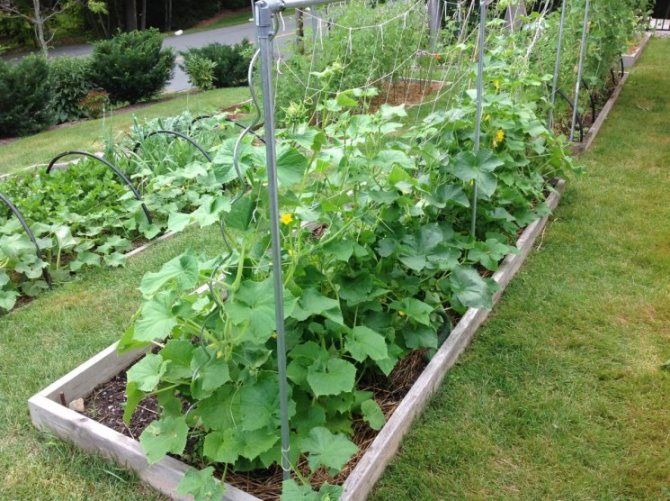

How to make a garden for cucumbers
Preparing the garden is a difficult job that is not easy for beginners to cope with. There are various useful ideas to help you prepare lazy beds. To figure out how to make the beds correctly, you need to familiarize yourself with the main stages of its manufacture.
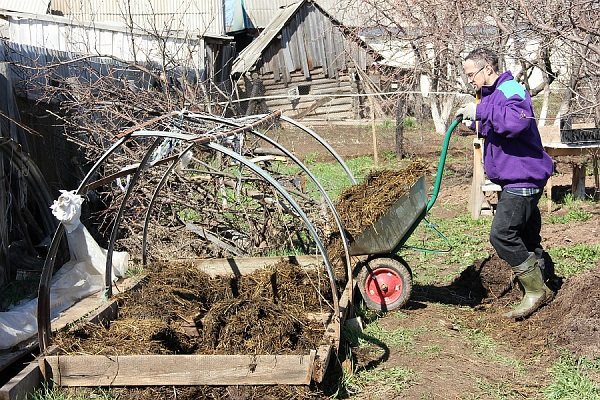

Trench creation
First you need to dig a trench, which is needed to grow vegetables. Its size should not be too large. The width of the trench is not more than one meter, and the height is 40-50 cm.
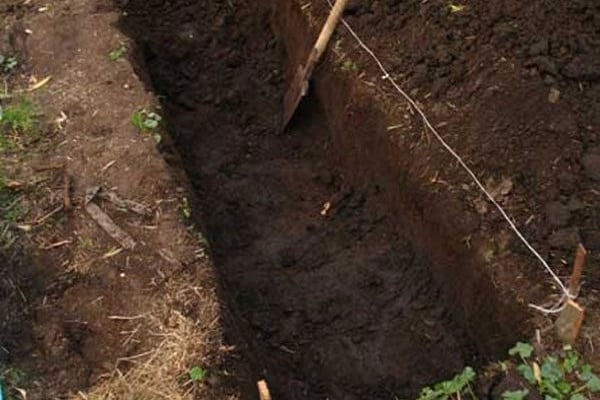

Laying the grass
To make the trench more durable and the cucumbers do not fall under the ground, a small layer of grass should be laid out on the bottom. To do this, any tall grass is mowed, laid on the bottom and carefully trampled underfoot. If this is not done, then after the rains, the soil in the garden bed will sag and because of this, young cucumber bushes will begin to rot.
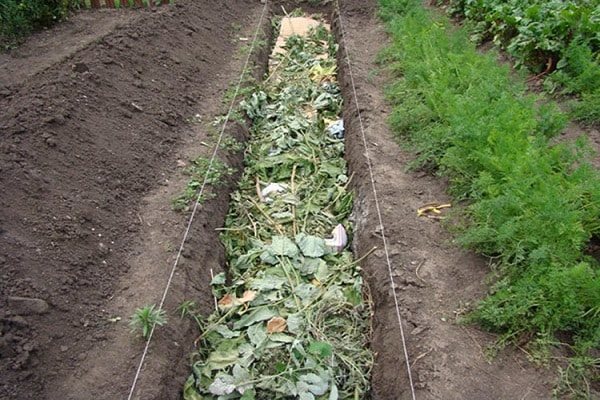

Preparation of a fertilizer mixture
To get a good harvest of cucumbers, a special feeding mixture is prepared. It is made from moldy bread mixed with potato skins. Before treating the bed with the solution made, the trench should be watered with warm water. Then the soil layer with the grass in the trench is covered with the mixture. Over time, a fermentation process appears, during which bacteria begin to appear. Cucumbers need them for normal growth.
See also
Description of the Muromsky cucumber variety, its characteristics and productivityRead
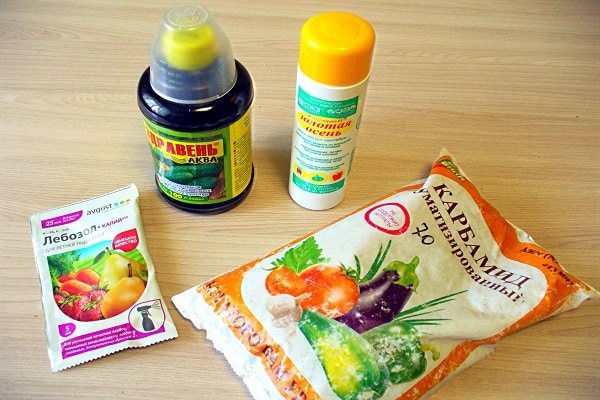

Landing
We fill the entire layer with fertilizers with soil, after which we plant cucumbers in the garden. For this, the cucumber bed is pre-watered with water and small holes are made on it. They should be 10 cm wide and 5-7 cm deep. Before planting cucumbers, the seeds must be disinfected.
Some are interested in whether it is possible to plant cucumbers too close. This is not worth doing, as the bushes can shade each other and therefore grow more slowly. It is recommended to install special supports near each bush, to which plants are suspended for better growth.
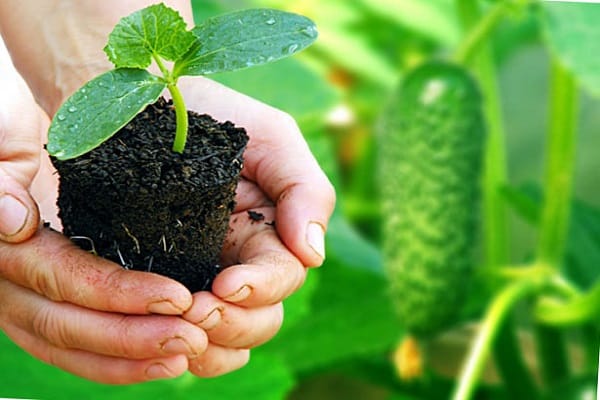

Choosing a landing site
For your cucumbers to produce good yields, they must be planted in the right place.
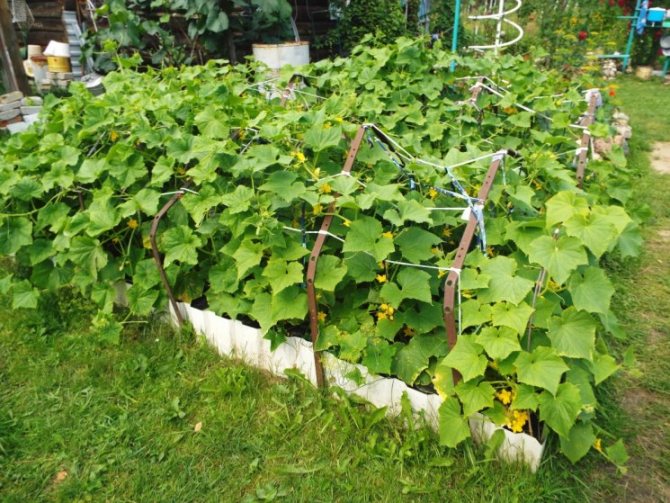

How to make a garden for cucumbers in the open field and choose the right location? To do this, determine a place that is well lit and warmed by the sun.
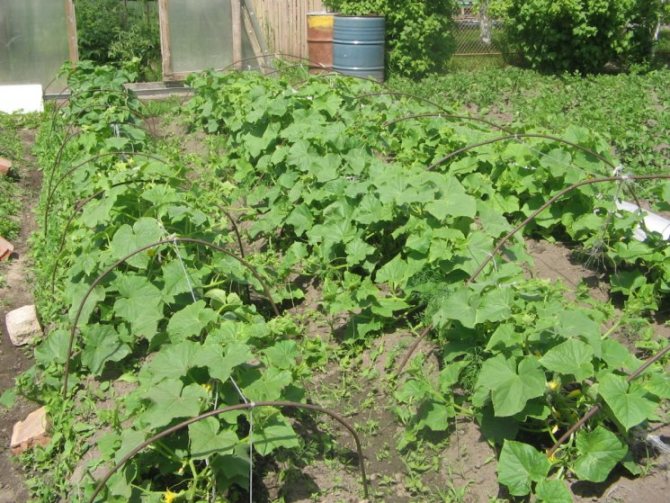

Check for drafts. A strong gust of wind can break off the cucumber bushes.
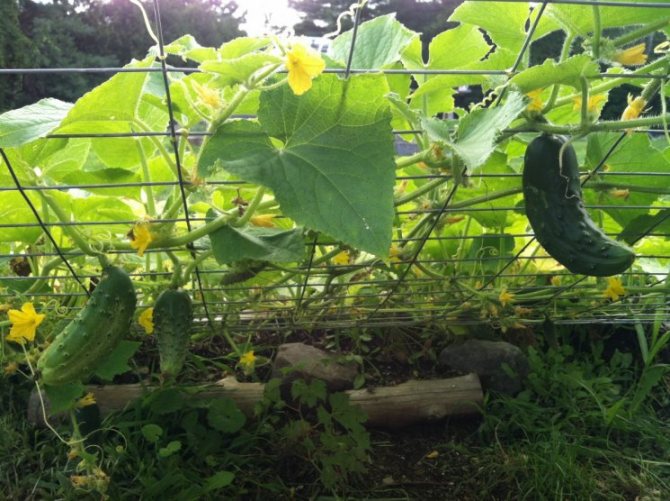

In case you want to plant it in such a place, plant corn or potatoes next to it. They will help protect the cucumbers from the strong gust of wind.
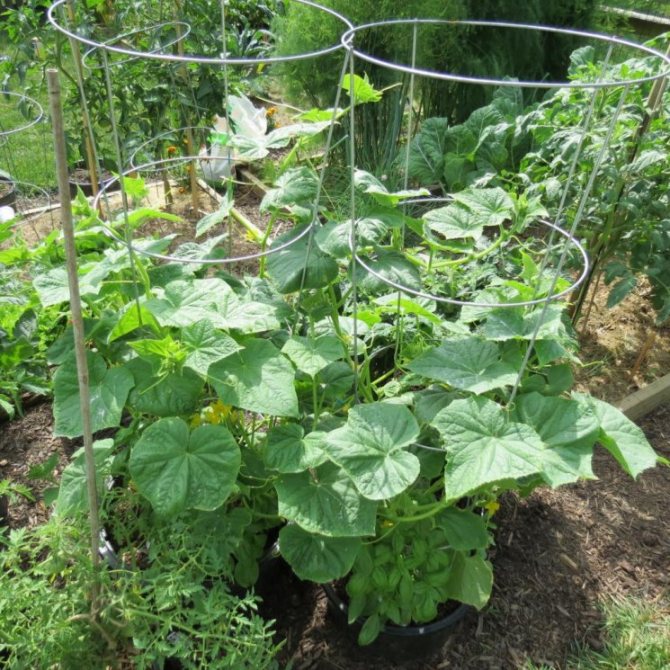

Features of growing cucumbers in the open field
Cucumbers are thermophilic, unpretentious plants. But some growing secrets will help you get more quality crops. Next, you will find out when and how best to plant cucumbers, what care features exist.
How to choose open field cucumber seeds
The choice of seeds for planting is crucial. You can get them in two ways:
- take from seed cucumbers from their beds or from neighbors;
- buy bags of ready-made seeds in a specialized store.
The second option is safer. Read the packaging carefully. It indicates not only the variety, the rules of care and the timing of ripening, but also the purpose of vegetables: salad or for pickling. Decide on the goal of growing vegetables in your garden beds.
Planting cucumbers with seedlings in open ground
Seedlings are planted in April, in order to plant them in open ground in early June, when the weather is warm and the soil warms up. This is a very sensitive culture to temperature extremes. The earth should warm up well and be no lower than + 10-15 degrees.
Earrings on birch trees are a popular sign of the right time.
The seedling method allows you to significantly accelerate the fruiting of plants. The crop will be harvested a couple of weeks earlier than if planted with seeds. Plant the seedlings in rows 30 cm apart. The seedlings should have 2-3 true leaves. They usually appear 3 weeks after germination.
Cucumbers are planted for seedlings as follows:
- Warm the selected seeds for a month in a warm place at a temperature of +25 degrees. So you can get friendly shoots of all seeds.
- Disinfect the seeds before planting.
- Soak for half a day in a damp cloth or gauze soaked in a nutritive mixture of wood ash and nitrophosphate.
- Then rinse and lay on a damp cloth to swell at + 23 degrees.
- At the last stage, before planting, the seeds are placed in the refrigerator.
- Sow in 0.5 cm depressions in boxes with damp soil.
- They can be covered with foil and placed in a dark place until shoots appear.
Seedlings are watered as the soil dries up about once a week. At first, you can use a spray gun.
When the seedlings have 2-3 true leaves, they can be transplanted into open ground.
It will be interesting:
Growing cucumbers Shosha F1
Planting cucumbers by seeds in open ground
Cucumbers can be planted directly as seeds in open ground. The soil should be loose, fertilized and warm. The frost risks should have already passed. The right time is mid-May.
Make even indentations at a distance of 20-30 cm, just so that you can stand between the rows. Submerge the seeds 1.5 to 2 cm in loose, damp soil.
Seeds for planting in open ground are prepared in the same way as for planting seedlings. So they will rise faster and more amicably. Two schemes are offered:
- linear - each seed at a distance of 15-20 cm from each other;
- staggered at a distance of 20 cm from each other.
Also, experienced gardeners recommend sprinkling the beds with ash or tobacco dust so that the ants do not drag the seeds away.
To maintain high humidity and heat, the bed is covered with plastic wrap or spunbond. You can also build a small greenhouse over the garden. But do not forget to air it periodically so that the seeds do not suffocate. After germination, the film is removed. Water the seedlings carefully.
How to properly plant cucumbers in open ground
The rules and procedure for planting cucumbers in the open field are as follows:
- seeds are prepared in advance, a month before planting;
- the land should be prepared in the fall, and in the spring it is loosened, weeds are removed and watered abundantly;
- you can add some organic or mineral fertilizers;
- the beds level and distribute the place;
- seeds are planted on prepared beds, covered and germinated;
- once a week watered, thinned, removing the weakest.
Favorable temperature for cucumbers in the open field
Cucumbers are very sensitive to low temperatures. The comfortable temperature for cucumbers in the open field is determined by the period of plant development, the growing method and the level of lighting. In summer, the optimum temperature is about 26-28 degrees in sunny weather, and +25 in cloudy weather. At night, nutrients are directed to fruits, shoot tips and roots.
The optimal night temperature for cucumbers in the open field is about +20 degrees.
Plants can be planted when the soil temperature at a depth of 10-12 cm is higher than + 13-14 degrees.
The critical temperature for cucumbers in the open field is below +12 degrees.... The leaves begin to turn yellow, the flowers fall off, the ovaries are not formed, but the plant can still live. Also, the critical temperature is above +28, the plant begins to dry out, ceases to bear fruit.
The optimum soil temperature is + 24-26 degrees. In the short term, the plant can survive a decrease of up to + 5-7 degrees.
Hardened, fruiting plants survive lower temperatures better than young seedlings. Therefore, during the cultivation of seedlings and seed preparation, it is necessary to harden the temperatures.
Cucumber care
Standard vegetable care includes regular watering, loosening, fertilizing, and weeding.
Watering is necessary depending on the weather conditions. The hotter and drier, the more often irrigation is required. It is best to water every day with warm, settled water. Sprinkler irrigation works great so as not to wash out the roots, since you cannot water at the very roots.
Loosen the soil after watering the plants. But don't touch the whips. They can only be lifted slightly or moved to the side.
Top dressing of cucumbers in the open field during cultivation is carried out 3-4 times. The first - as soon as sprouts appear, if planted with seeds. Use mullein or diluted bird droppings, 1 liter per bucket of warm water, as well as urea, superphosphates, potassium sulfates, ash, 20-40 g per bucket of water. Increase the percentage of potash or nitrogen fertilizer while vegetables are growing.
Conduct foliar dressing. Spray your bushes with a fertilizer solution every month. Suitable:
- ammonium nitrate;
- superphosphate;
- potassium sulfate.
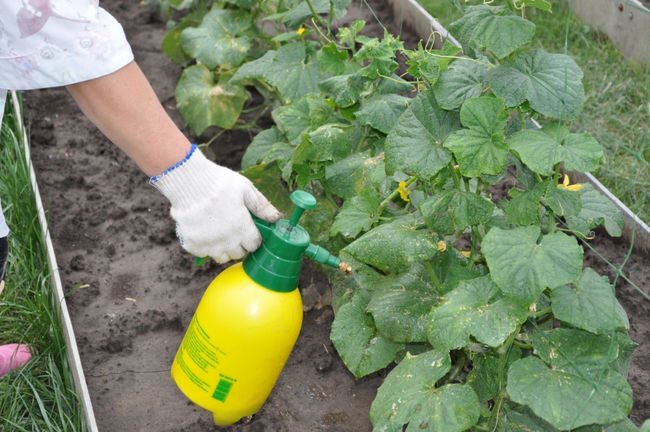

Another important point is pinning. You need to pick or pinch cucumbers in the open field after the formation of 7-8 true leaves. Thanks to this, the number of lashes increases, female flowers are formed.
Late sowing of cucumbers in open ground
Choose the planting time for cucumbers depending on the region. The farther south, the later you can plant. The plant will have time to grow stronger and give a crop. The latest date is the 20th of June.
Vegetables planted in the late period are grown mainly for pickling. For this, early ripening varieties are used. Summer open planting is carried out only in the southern regions or the middle lane. In the northern regions, late disembarkation is not practiced.
On what soil is it better to grow cucumbers?
Which soil is best for this plant: acidic or alkaline? For a good harvest, you should pick up lands where there is a lot of sandy loam and loamy soil.
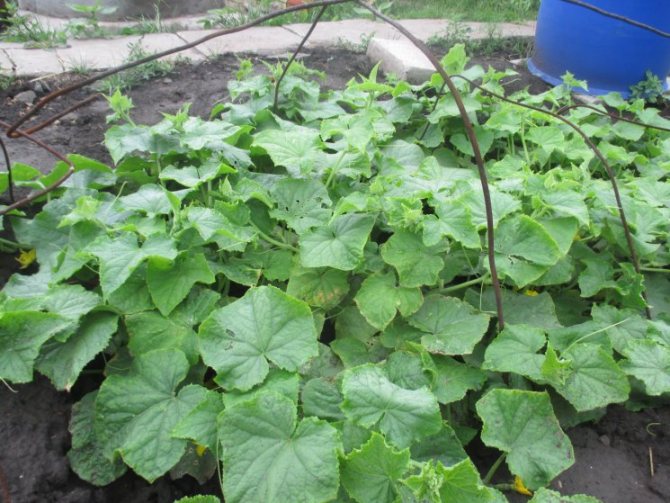

Experts speak out against planting cucumbers in areas where acidic soil predominates.Unfortunately, planting plants in such lands is fraught with the fact that the root system will develop rather slowly.
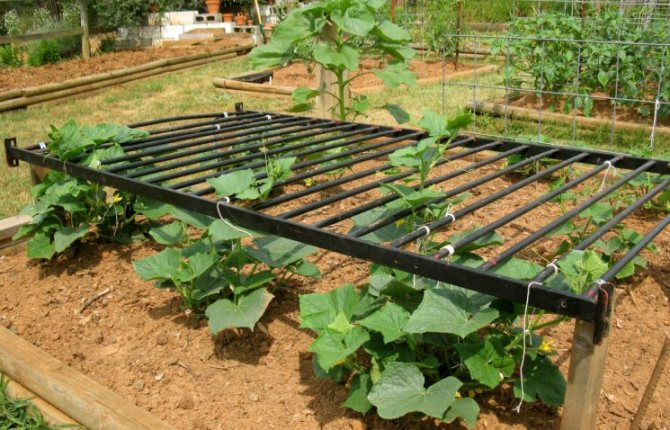

Tips from experienced gardeners
In order for the created warm bed to give a positive result, it is worth listening to the recommendations of experienced vegetable growers:
- planting cucumbers is best done in the morning in the holes;
- watering is done twice a week, trying not to erode the topsoil;
- if it is cool and damp outside, the frequency of watering is reduced to 1 time per week;
- drying of the beds is unacceptable, otherwise the process of decomposition of organic matter will stop;
- during watering, do not allow water to fall on the leaves of cucumbers;
- if the temperature rises above the norm under the film cover, it is replaced with lutrasil.
Compliance with the simplest recommendations will help the grower get a good harvest of cucumbers.
Preparing a bed for disembarkation
Always before planting plants in beds in the open field, you should first prepare the site.
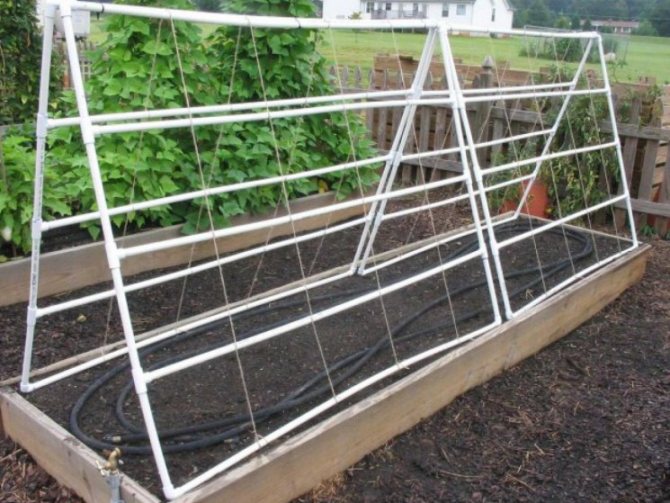

Treat the soil in advance so that it is saturated with nutrients. To do this, you can use potassium permanganate, mineral dressing or copper sulfate.
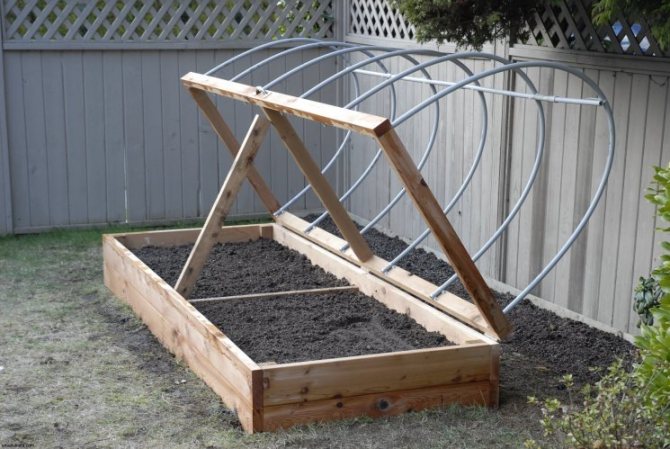

Next, we proceed to the formation of the beds. Determine their dimensions, make the correct markings and start forming the beds.
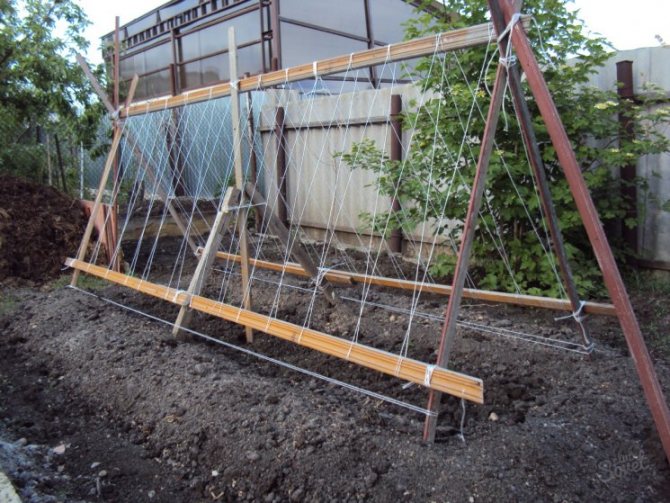

If necessary, you can make a mobile bed. To do this, take a small box and lay all the components in layers as for warm beds.
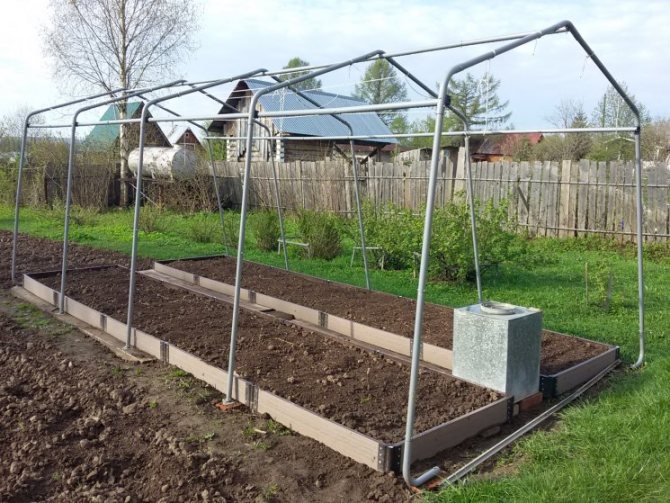

Photo of cucumber beds
Please repost
0

